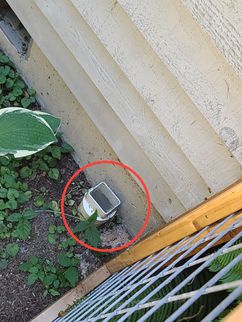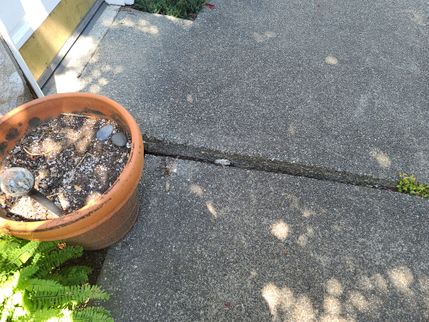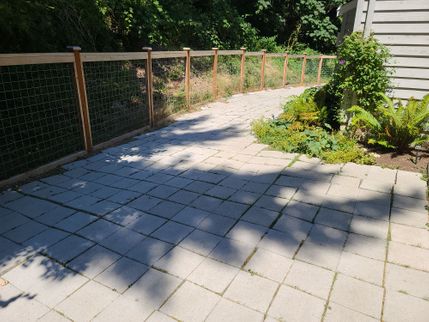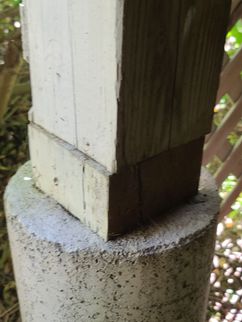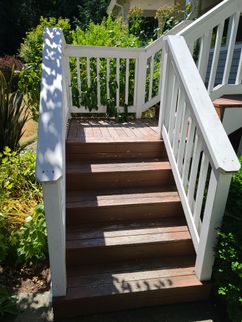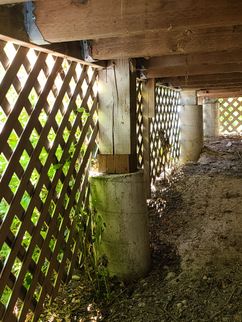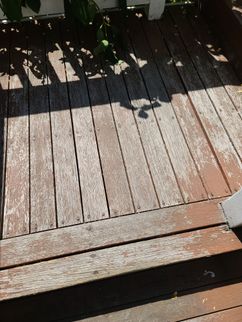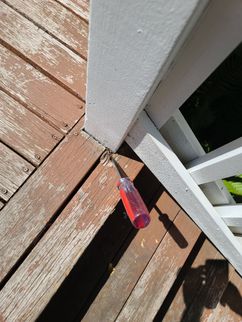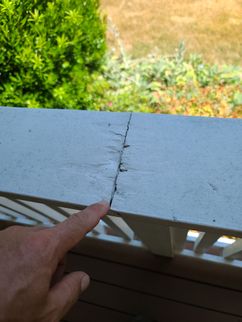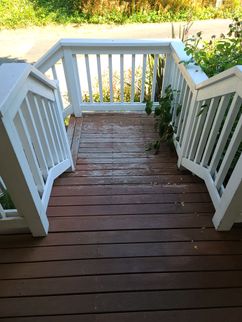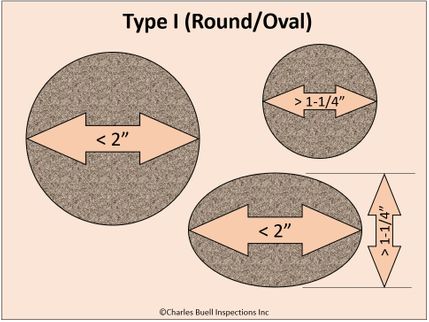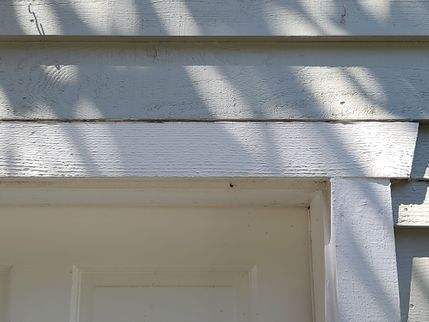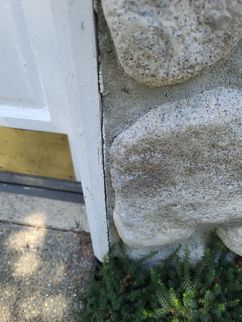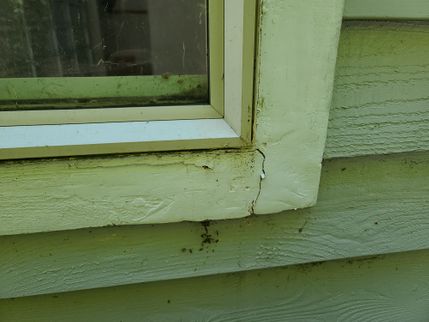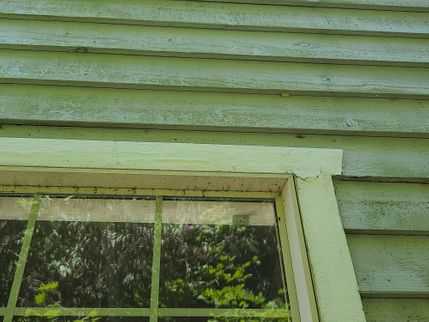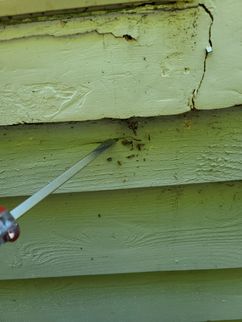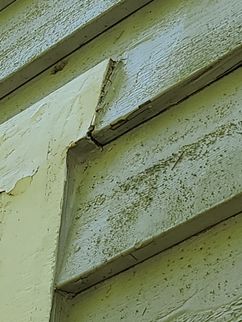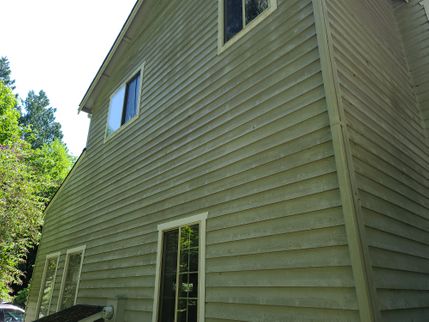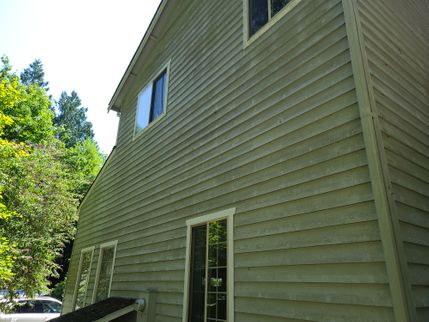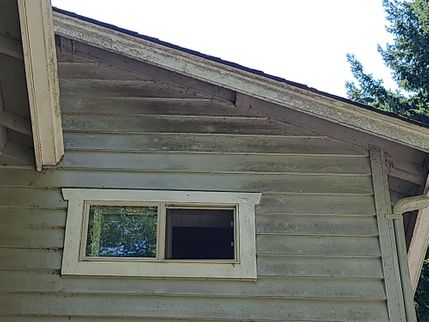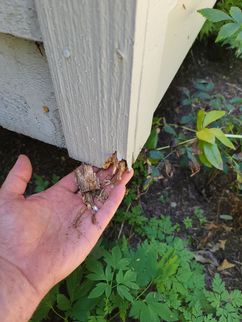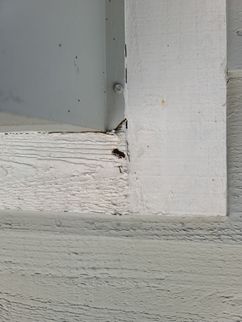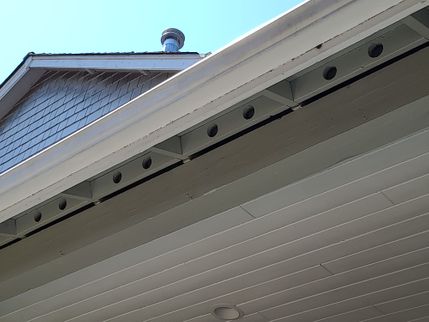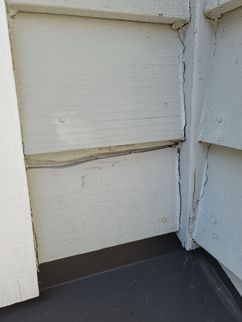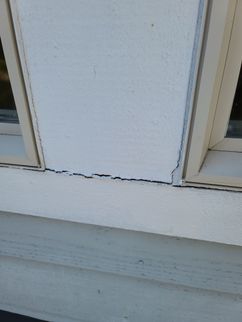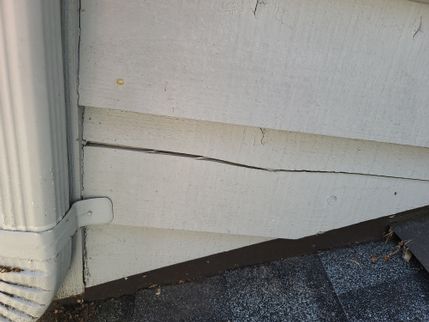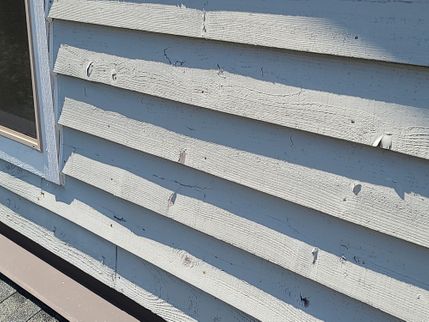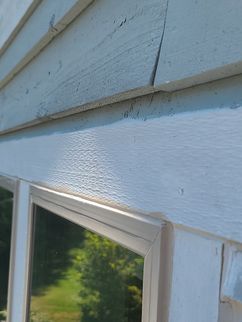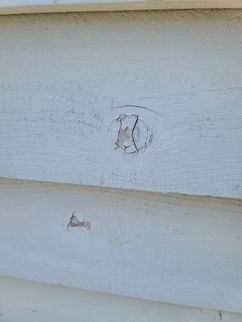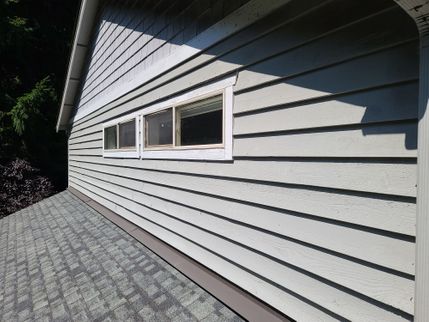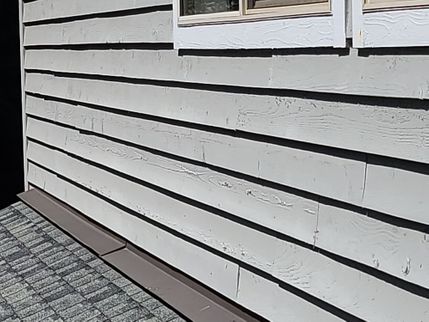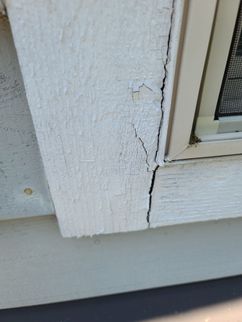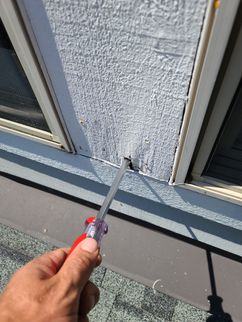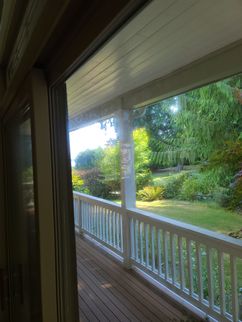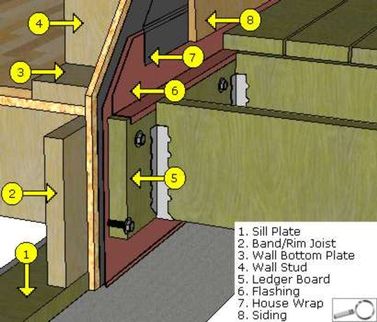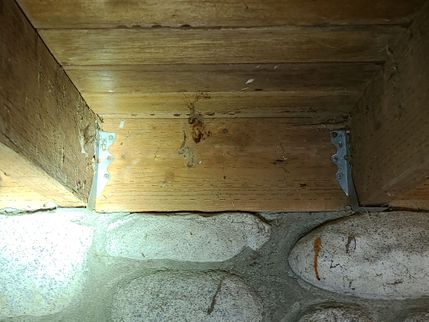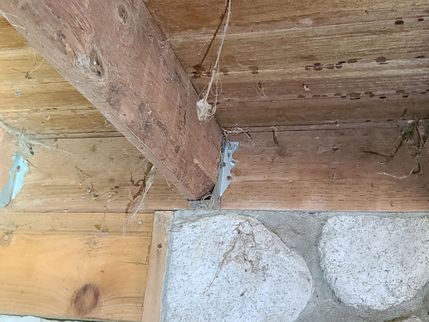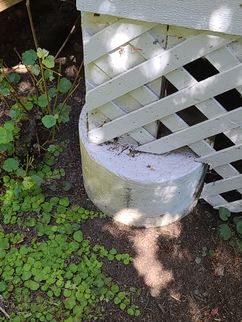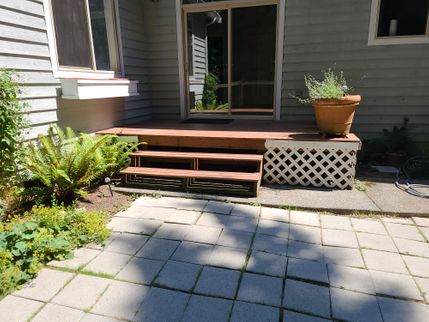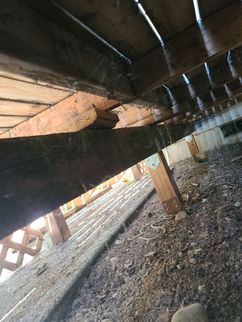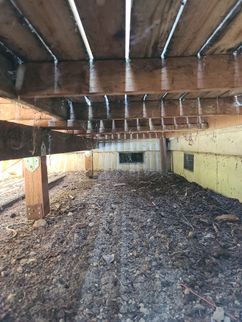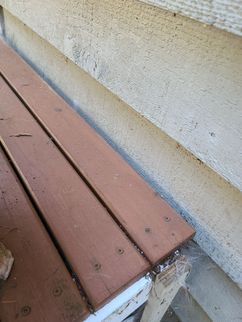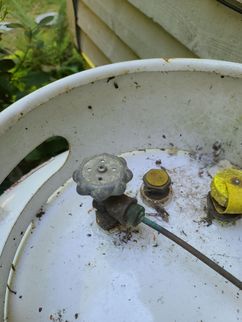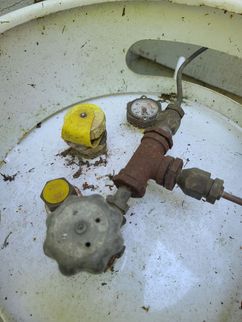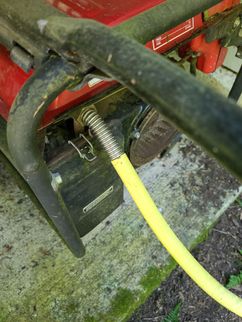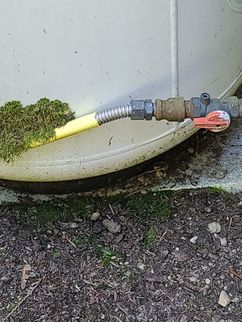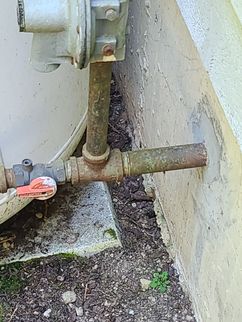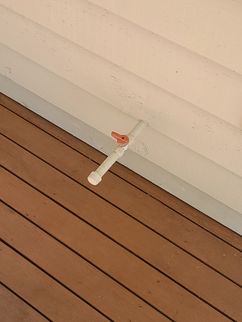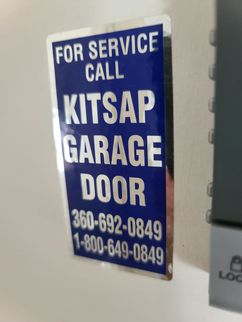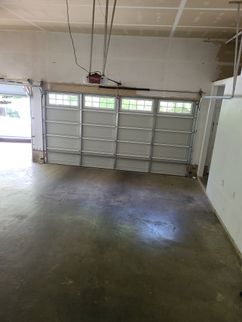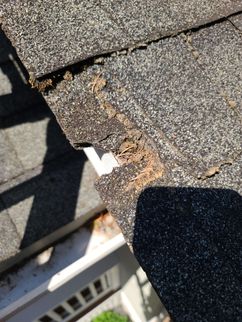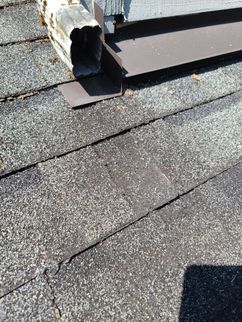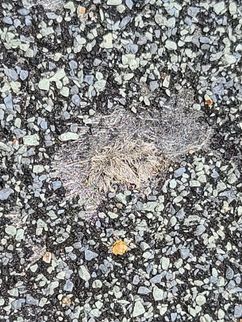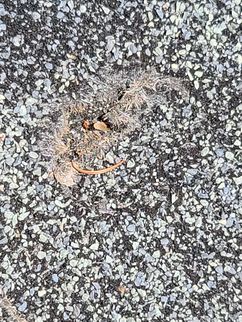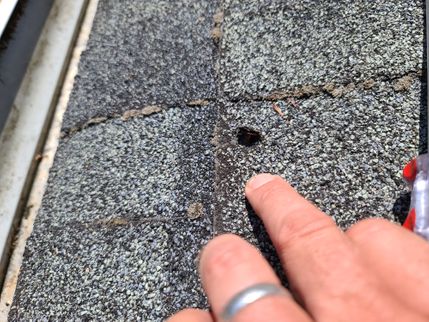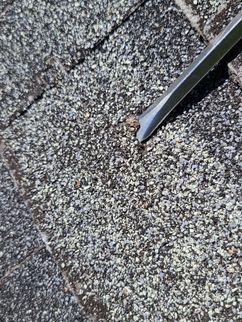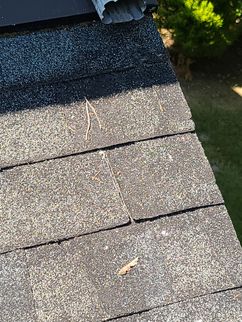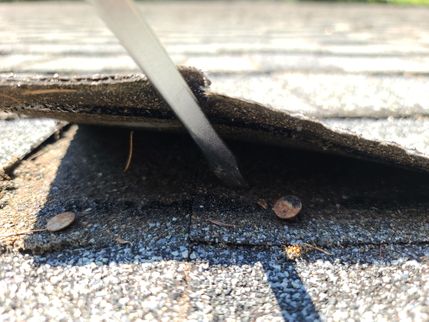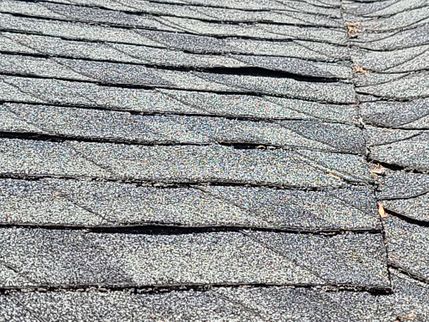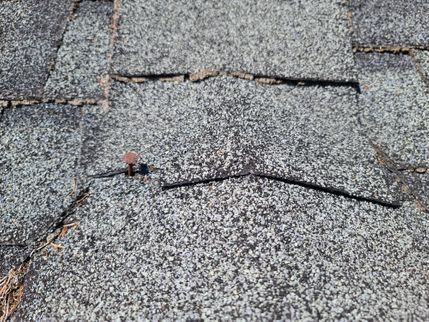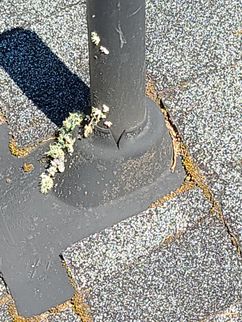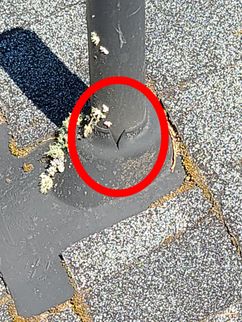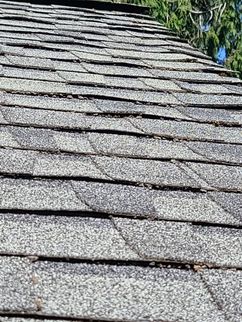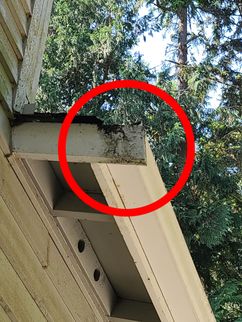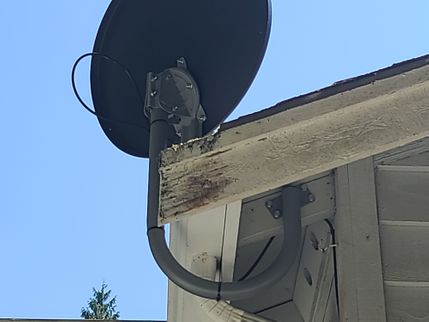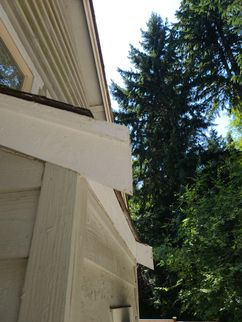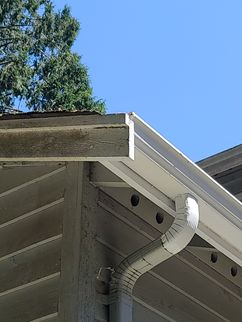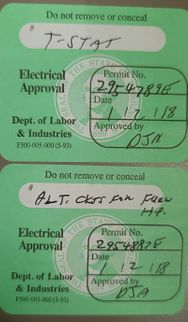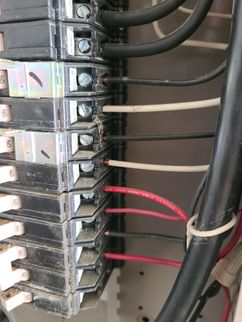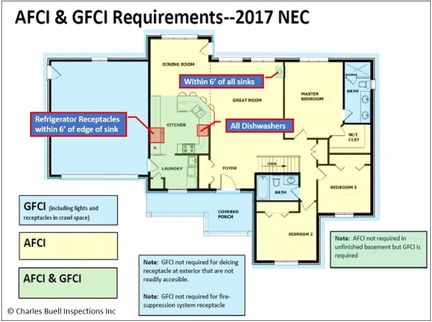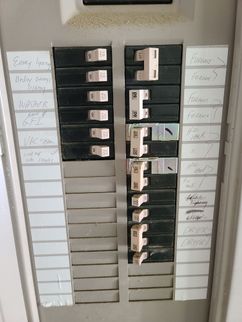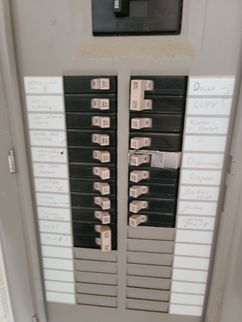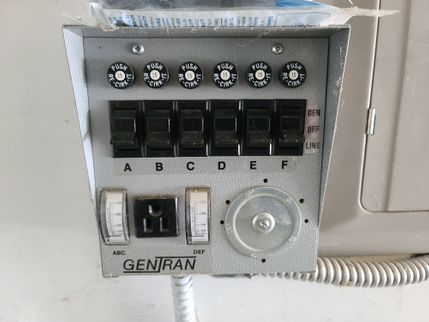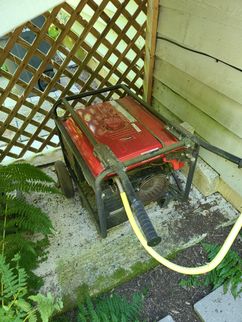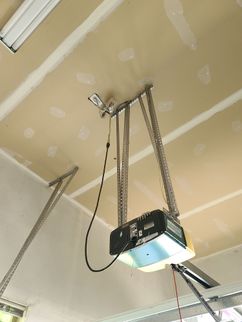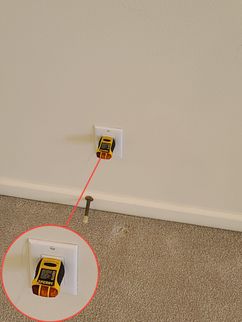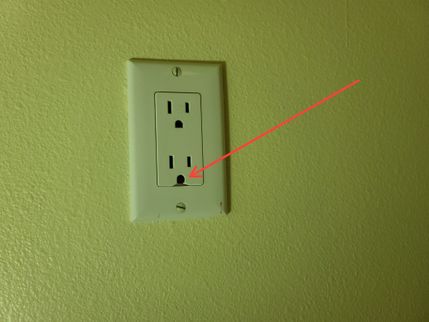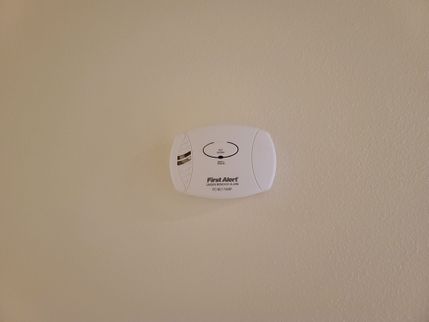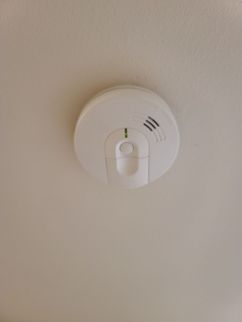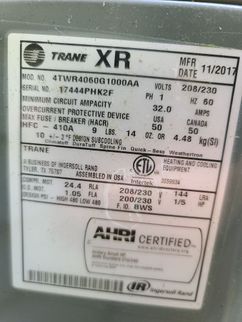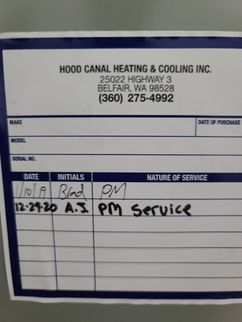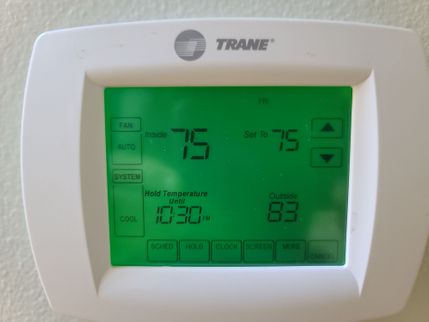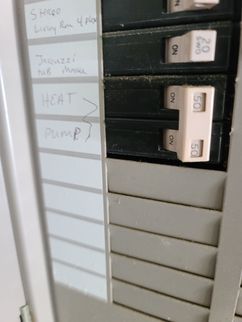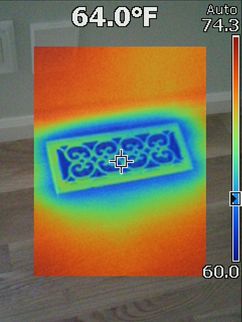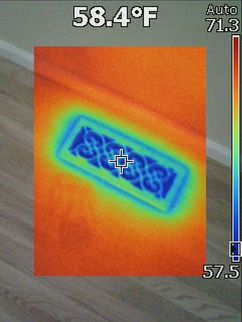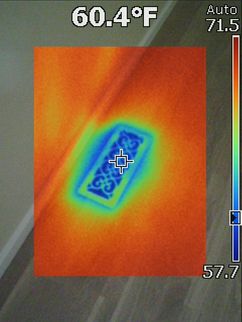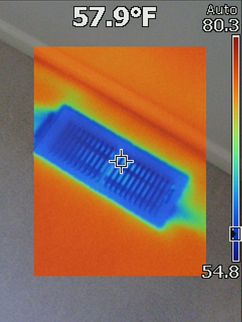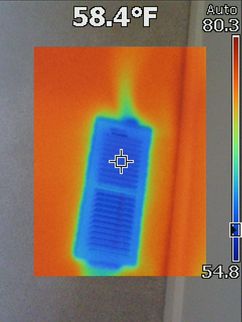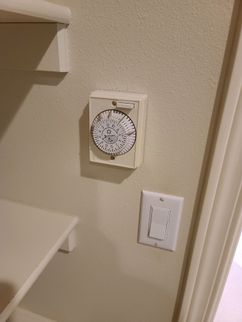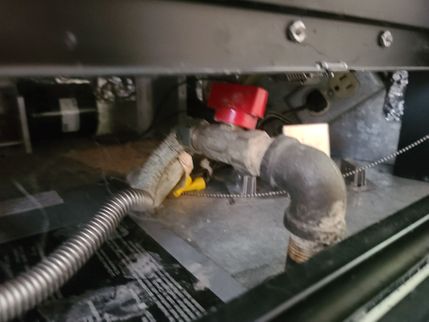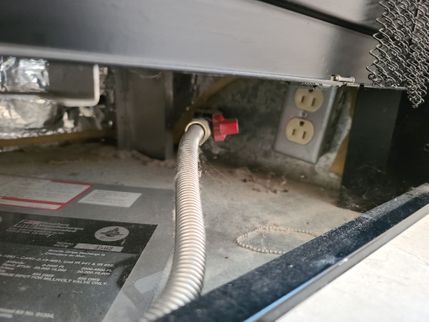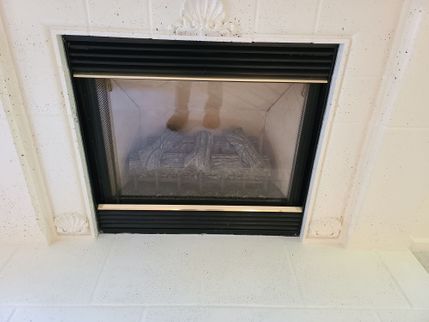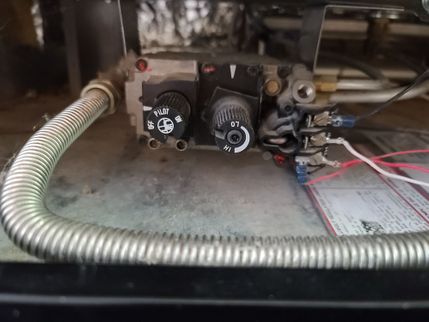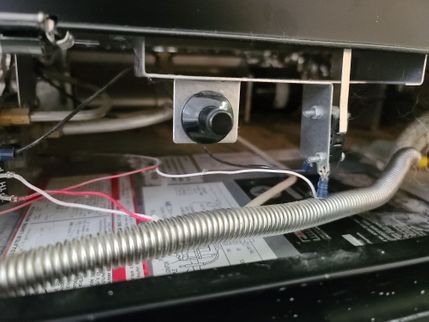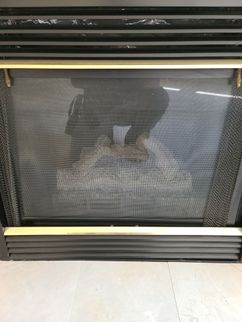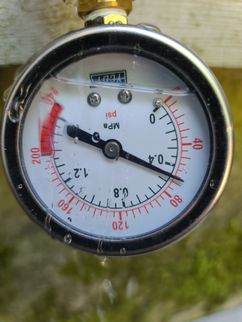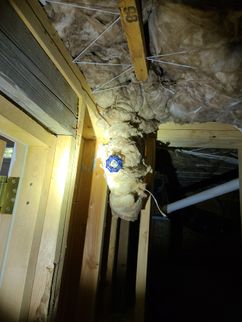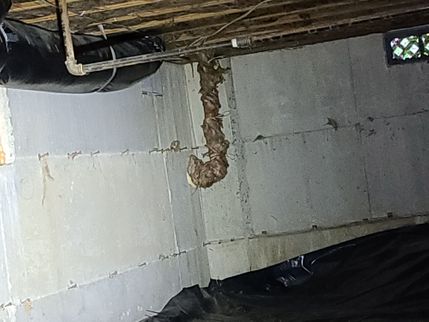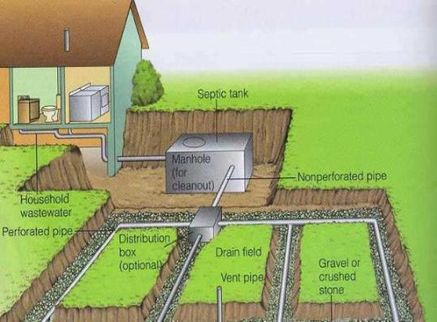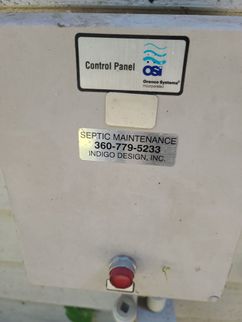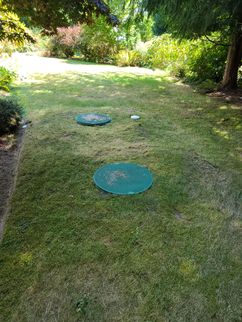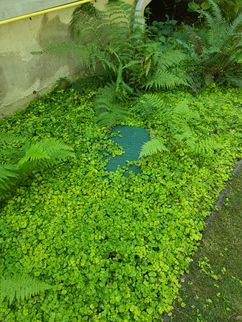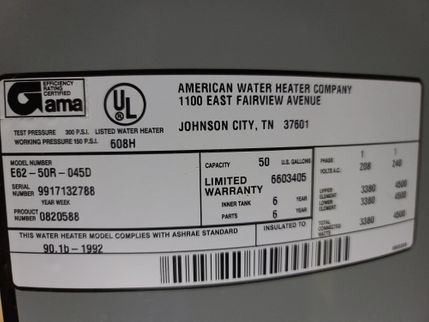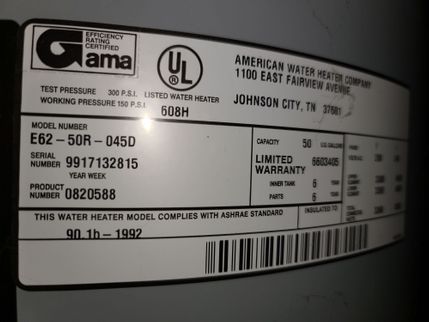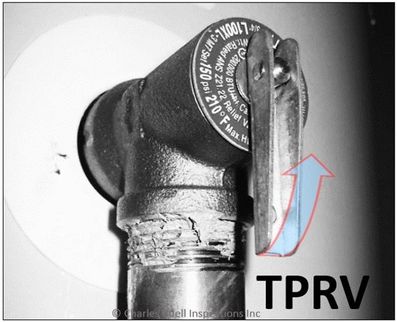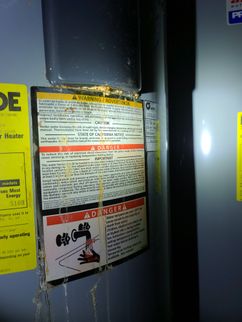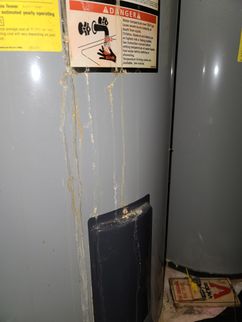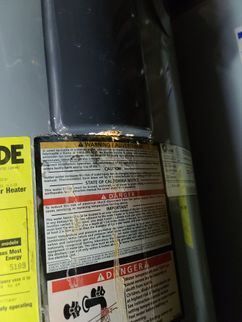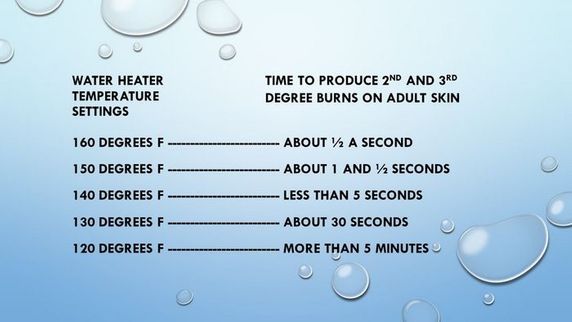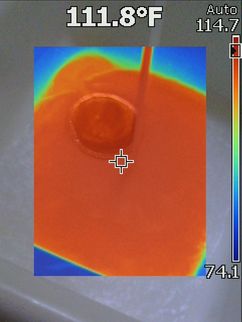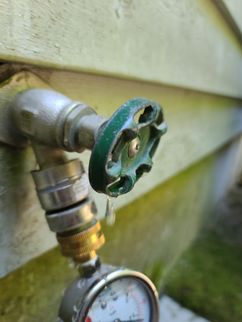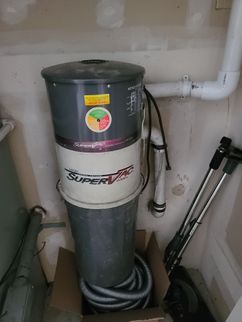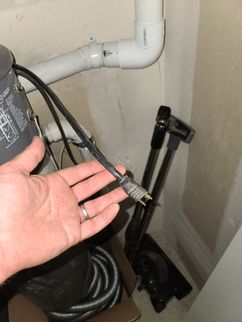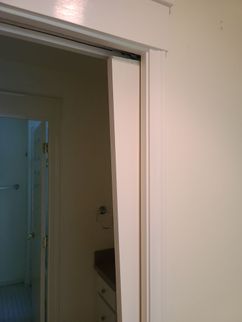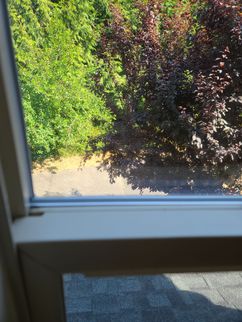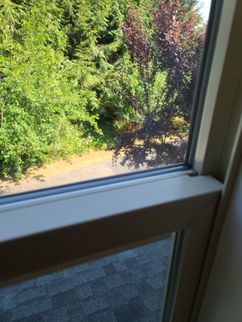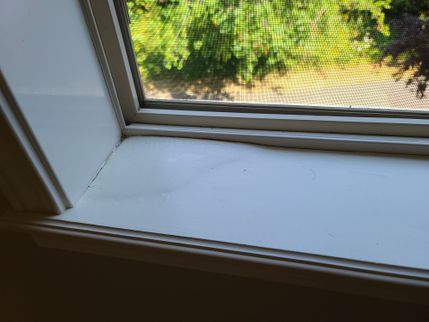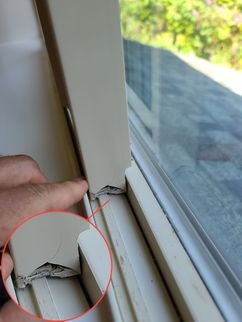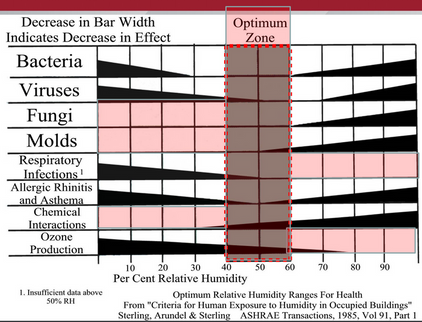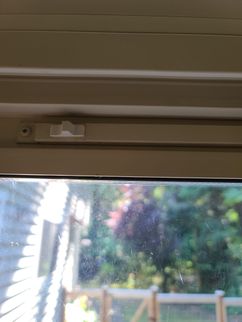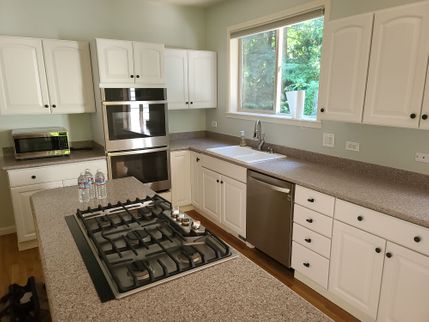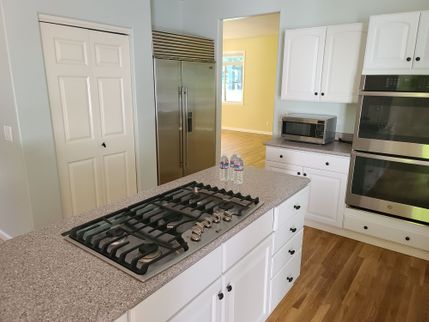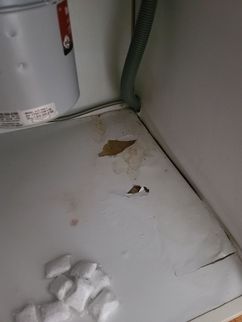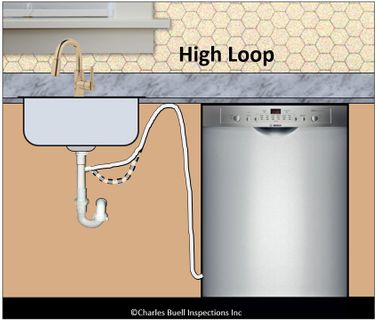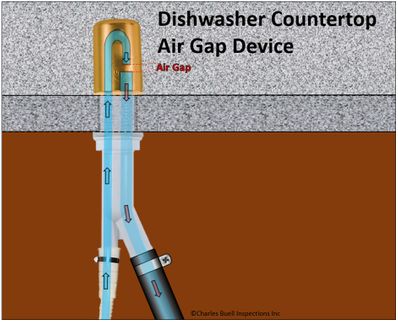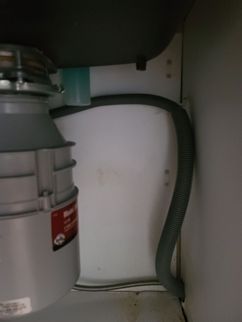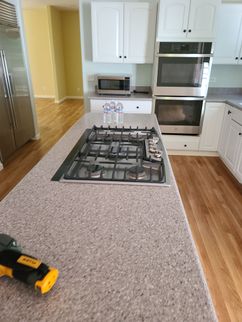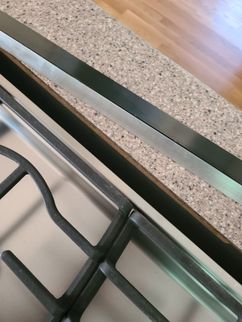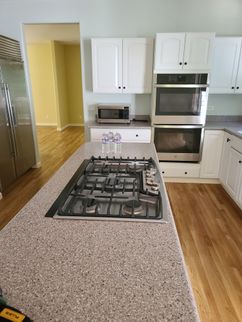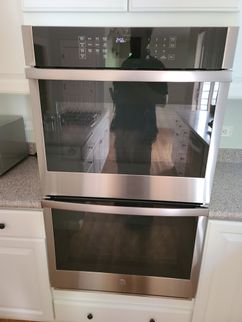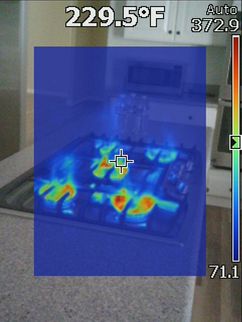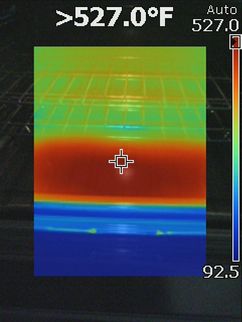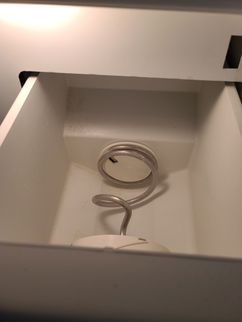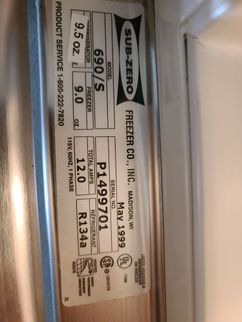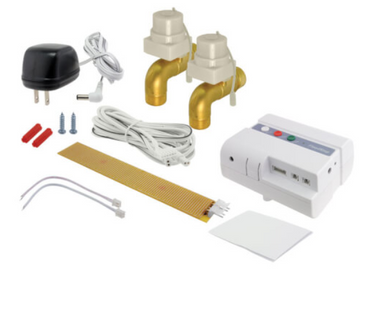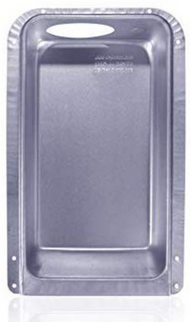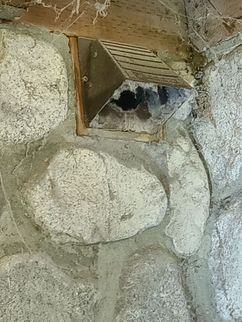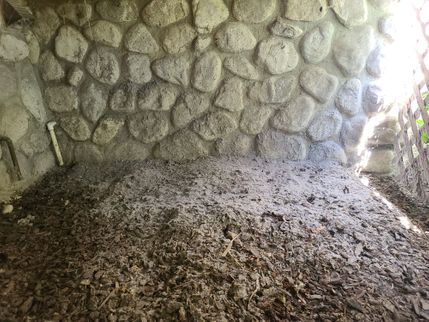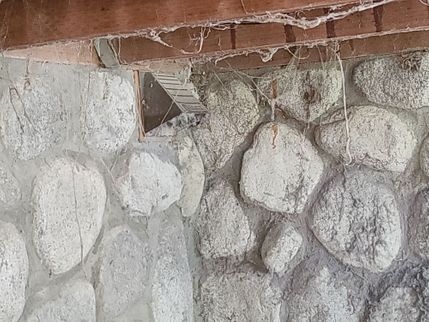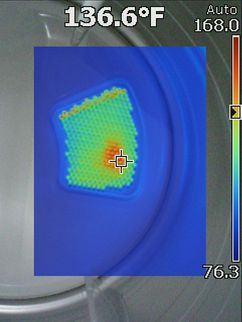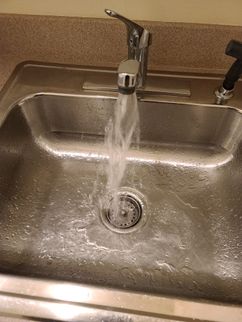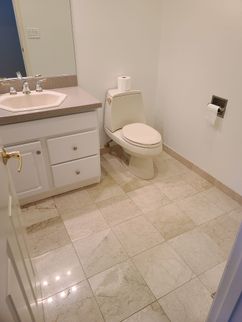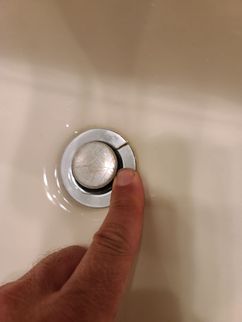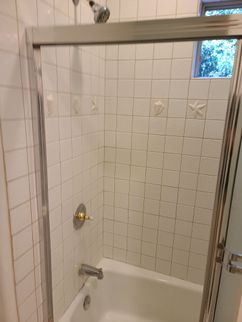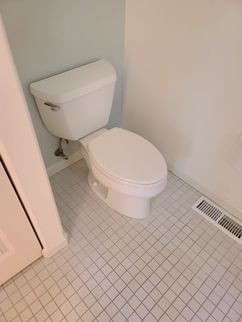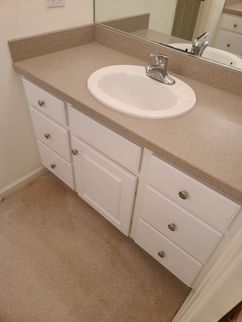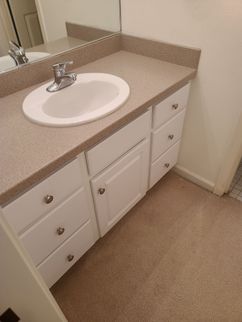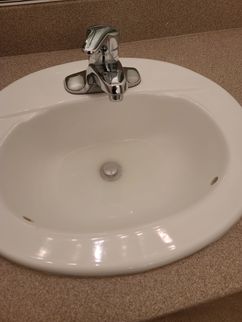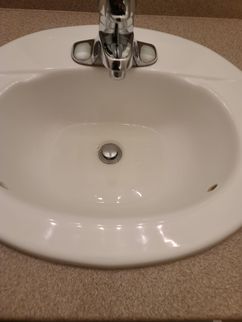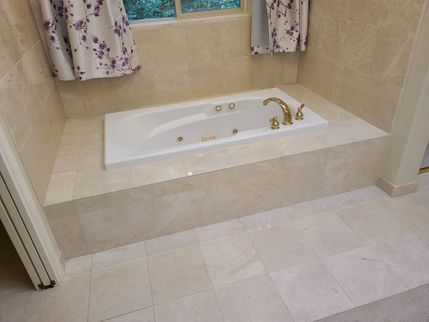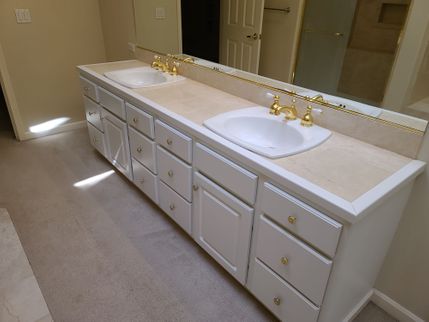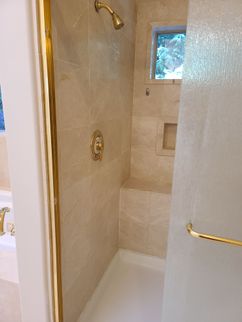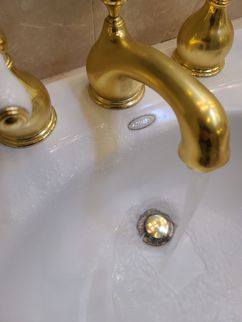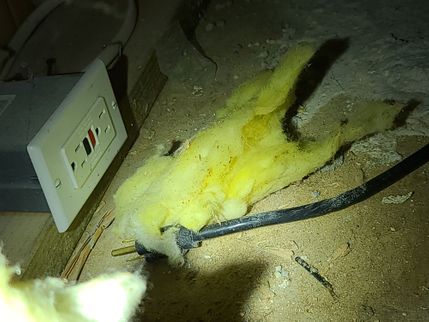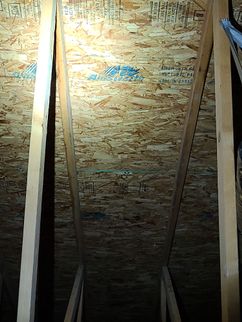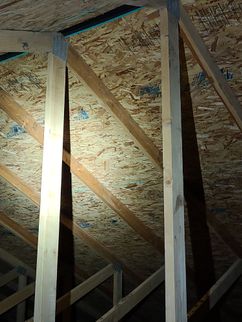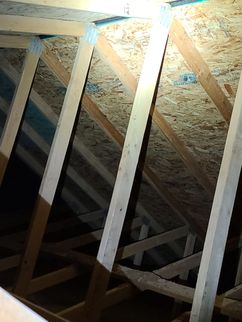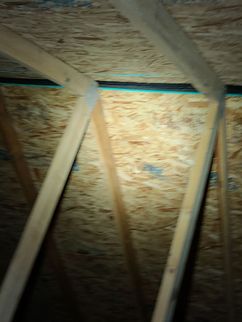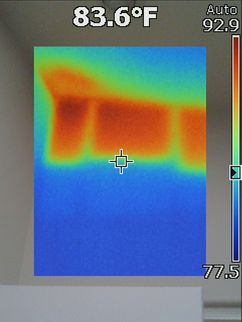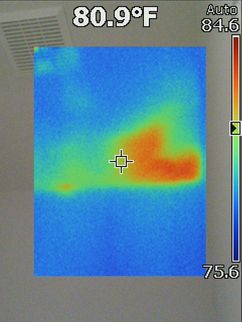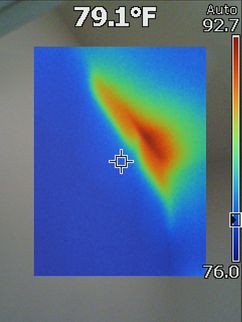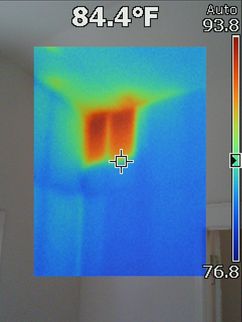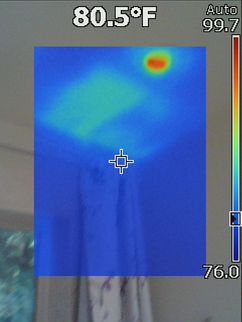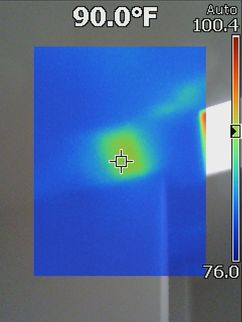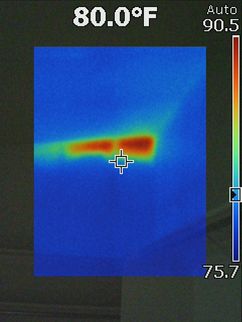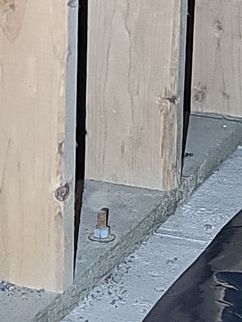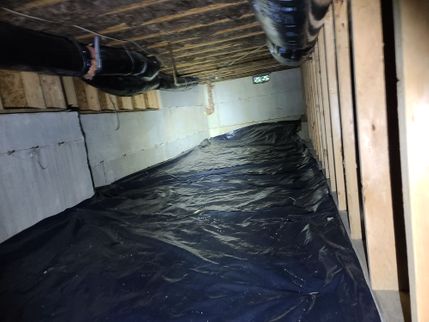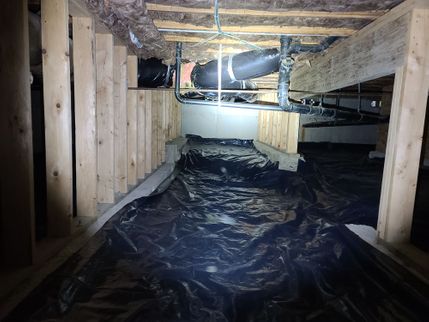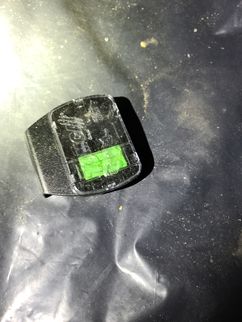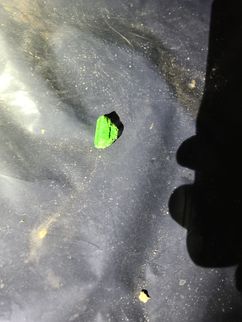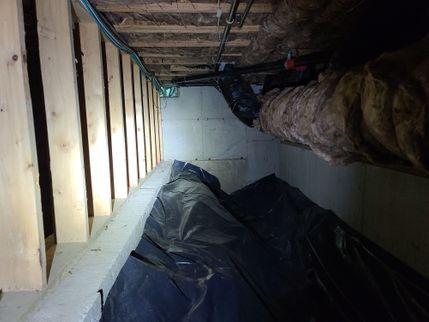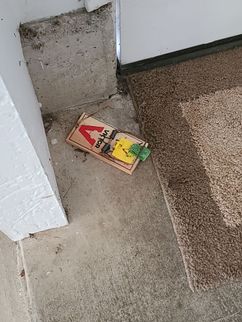The Scope and Purpose of a Home Inspection
Purchasing property involves risk
The purpose of a home inspection is to help reduce the risk associated with the purchase of a structure by providing a professional opinion about the overall condition of the structure. A home inspection is a limited visual inspection and it cannot eliminate this risk. Some homes present more risks than others. We cannot control this, but we try to help educate you about what we don’t know during the inspection process. This is more difficult to convey in a report and one of many reasons why we recommend that you attend the inspection.
A home inspection is not an insurance policy
This report does not substitute for or serve as a warranty or guarantee of any kind. Home warranties can be purchased separately from insuring firms that provide this service.
A home inspection is visual and not destructive
The descriptions and observations in this report are based on a visual inspection of the structure. We inspect the aspects of the structure that can be viewed without dismantling, damaging or disfiguring the structure and without moving furniture and interior furnishings. Areas that are concealed, hidden or inaccessible to view are not covered by this inspection. Some systems cannot be tested during this inspection as testing risks damaging the building. For example, overflow drains on bathtubs are generally not tested because if they were found to be leaking they could damage the finishes below. Our procedures involve non-invasive investigation and non-destructive testing which will limit the scope of the inspection.
This is not an inspection for code compliance
This inspection and report are not intended for city / local code compliance. During the construction process structures are inspected for code compliance by municipal inspectors. Framing is open at this time and conditions can be fully viewed. Framing is not open during inspections of finished homes, and this limits the inspection. All houses fall out of code compliance shortly after they are built, as the codes continually change. National codes are augmented at least every three years for all of the varying disciplines. Municipalities can choose to adopt and phase in sections of the codes on their own timetables. There are generally no requirements to bring older homes into compliance unless substantial renovation is being done.
This is just our opinion
Construction techniques and standards vary. There is no one way to build a house or install a system in a house. The observations in this report are the opinions of the home inspector. Other inspectors and contractors are likely to have some differing opinions. You are welcome to seek opinions from other professionals.
The scope of this inspection
This inspection will include the following systems: exterior, roof, structure, drainage, foundation, attic, interior, plumbing, electrical and heating. The evaluation will be based on limited observations that are primarily visual and non-invasive. This inspection and report are not intended to be technically exhaustive.
Your expectations
The overall goal of a home inspection is to help ensure that your expectations are appropriate with the house you are proposing to buy. To this end we assist with discovery by showing and documenting observations during the home inspection. This should not be mistaken for a technically exhaustive inspection designed to uncover every defect with a building. Such inspections are available but they are generally cost-prohibitive to most homebuyers.
Your participation is requested
Your presence is requested during this inspection. A written report will not substitute for all the possible information that can be conveyed verbally by a shared visual observation of the conditions of the property.
How to Read This Report
Getting the Information to You
This report is designed to deliver important and technical information in a way that is easy for anyone to access and understand. If you are in a hurry, you can take a quick look at our "Summary Page” and quickly get critical information for important decision making. However, we strongly recommend that you take the time to read the full Report, which includes digital photographs, captions, diagrams, descriptions, videos and hot links to additional information.
The best way to get the layers of information that are presented in this report is to read your report online (the HTML version), which will allow you to expand your learning about your house. You will notice some words or series of words highlighted in blue and underlined – clicking on these will provide you with a link to additional information. The HTML version of this report also contains streaming videos. Short video clips often contain important information and critical context and sounds that can be difficult to capture in words and still pictures.
For the most reliable viewing experience, I recommend viewing the report on as large a screen as practical, as much detail can be lost on small devices like smart phones. For similar reasons, reports should only be printed in color to retain as much detail as possible and minimize misinterpretation of photographs.
This report can also be printed on paper or to a PDF document.
Chapters and Sections
This report is divided into chapters that parcel the home into logical inspection components. Each chapter is broken into sections that relate to a specific system or component of the home. You can navigate between chapters with the click of a button on the left side margin.
Most sections will contain some descriptive information done in black font. Observation narrative, done in colored boxes, will be included if a system or component is found to be significantly deficient in some way or if we wish to provide helpful additional information about the system or the scope of our inspection. If a system or component of the home was deemed to be in satisfactory or serviceable condition, there may be no narrative observation comments in that section and it may simply say “tested,” or “inspected.”
Observation Labels
All narrative observations are colored, numbered and labeled to help you find, refer to, and understand the severity of the observation. Observation colors and labels used in this report are:
- Major Concern:Repair items that may cost significant money to correct now or in the near future, or items that require immediate attention to prevent additional damage or eliminate safety hazards.
- Repair:Repair and maintenance items noted during inspection. Please note that some repair items can be expensive to correct such as re-finishing hardwood floors, but are considered simply repair items due to their cosmetic nature.
- Recommended Maintenance:These are repair items that should be considered "routine home ownership items," such as servicing the furnace, cleaning the gutters or changing the air filters in the furnace.
- Improve or Upgrade:Observations that are not necessarily defects, but which could be improved for safety, efficiency, or reliability reasons. These are often items which reflect changes in building codes or standards.
- Monitor:Items that should be watched to see if correction may be needed in the future.
- Due Diligence:Observation such as a buried oil tank that may require further investigation to determine the severity and / or urgency of repair.
- Future Project:A repair that may be deferred for some time but should be on the radar for repair or replacement in the near future.
- Efficiency:Denotes observations that are needed to make the home more energy efficient as well as to bring the home up to modern insulation standards. This category typically includes windows and insulation. Other items, such as lighting and appliances, are not inspected for their energy status.
- Recommended Disclosure Items:These are observations for which we recommend that sellers disclose more information to buyers so that buyers can better understand recent servicing, repairs or maintenance or even construction history or building and site design.
- Home Owners Association:These items should be brought to the attention of the Home Owner Association for correction or for additional information
- Inspection Notes and Limitations:Refers to aside information and /or any comments elaborating on descriptions of systems in the home or limitations to the home inspection.
Pest Inspection
All items with the bug logo () are part of a structural pest inspection. If your inspector included a structural pest inspection as a part of the scope of your home inspection, you can distinguish pest inspection items by this logo. You can also go to the pest inspection summary page to see a summary of the items that are part of a pest inspection.
Summary Page
The Summary Page is designed as a bulleted overview of all the observations noted during inspection. This helpful overview is not a substitution for reading the entire inspection report. The entire report must be read to get a complete understanding of this inspection report as the Summary Page does not include photographs or photo captions.
Moisture Meter Testing
Where moisture meter testing is indicated in this report a Protimiter Survey Master Dual Function was used.
Summary
Major Concerns
- ESDW-1 Exterior Siding, Doors and Windows:
The exterior siding and trim needs to be re-painted to preserve and maintain the siding system. Budget for re-painting the exterior in the near term. Prior to repainting, I would expect the need for localized rot repairs and other siding repairs. The southeast faces that are above the porch roof line are pretty exposed to the weather, and the siding here really needs paint and caulk. There is also some localized wood decay, for example at the north side garage window and siding. Examples of specific observations noted during inspection include:
- There is no head flashing for the trim between the garage doors and the siding.
- There is no head flashing for some of the horizontal trim junctures
- Re-caulking is needed between the stone siding and the trim by the garage.
- Localized wood decay was noted in the trim at the north side of the house by the garage windows
- Wood decay by the north garage window trim extends into the siding. There may be concealed water damage here.
- The north side of the building has organic and growth covering much of the siding.
- Wood decay noted at the base of the trim at the west side
- Wood decay noted in the trim around fireplace vent at the west side
- Potential bird entry points were noted at the eaves by the entry. Use wood trim to seal up here as needed.
- Split siding was noted at the second floor east side. I'll split siding should be sealed with caulk and painted
- Localized caulking failure was noted at the east side window trim
- More split siding at the second floor east side
- Paint failure at the exposed south side, second floor
- Missing head flashing noted at the south side window trim
- Localized paint failure was noted at the sun exposed sides of the building
- Rotted wood noted in the trim above the garage, second floor
- RCG-1 Roof, Chimney and Gutters:
This roof is done in an architectural grade or dimensional grade composition shingle. The roof looks to be in the last phase of its useful service life. While it is impossible to predict when roof replacement will be needed, roof replacement is recommended in the near term, to ensure reliable performance. Examples of specific observations noted during inspection include:
- A damaged section of roofing was noted above the entry
- Extensive granule loss was noted at the lower roof where upper downspouts drain
- In a few places, fiberglass mat of the shingles is exposed. This may be pressure washing damage.
- A nail pop was noted in the roofing above the garage
- A torn shingle was noted above the garage
- Fasteners are starting to loosen up causing shingles to lift and nail pops
- No drip edge flashing was installed. These are now required as of 2012.
- Minor deterioration noted a plumbing vent flashing
- Shingles noted on the south face, upper roof.
- Roofing shingles are missing in a number of places for the ends of the barge rafters. This can lead to wood decay in this exposed trim.
Recommendation
Hire a qualified roofing contractor to further evaluate this roof and update as recommended. It is possible a few more years of life can be eked from this roof, but it is an unreliable phase of its useful life.
Repairs
- G-3 Grounds:
Portions of the walkway flatwork around the home are settling creating trip hazards - see at the entry. Hire a qualified general contractor to further investigate and repair to eliminate all trip hazards and ensure a reliable walking surface. Sometimes slabs of concrete such as these can be lifted with slab jacking.
- G-4 Grounds:
The entry deck stairs are in the last phase of their useful service life. These are pretty exposed to the weather and are now 21 years old. I noted evidence of prior repairs to the base of a number of the posts at the stair landing and this entry side of the deck. In addition there is some localized wood decay in the stairs as well as stain failure. Implement repairs as needed until these stairs are rebuilt. Examples of observations noted during inspection include:
- The entry stairs are missing a graspable handrail
- The entry stairs need to be re-stained
- Localized wood decay noted at the entry stairs - see posts and decking
- Decay noted at the wood railing at the entry side of the front porch
- ESDW-2 Exterior Siding, Doors and Windows:
Multiple failed insulated glass units (IGU's) were noted in the exterior door glazing at the south side sliding glass door. A failed glass unit is when condensation has started to build up between the panes of glass. This cannot be cleaned, so the glass must be replaced for a proper finish. Have this further evaluated and repaired by a glass replacement specialist and repair all door glazing with lost seals. Please note that sometimes it can be difficult to determine when a seal is lost as condensation can build up over time and even change throughout a day or seasonally.
- DPB-1 Decks, Porches and Balconies:
The wrap-around deck ledger board has not been bolted to the house. This risks deck failure as the ledger attachment to the house can pull free. I recommend installing an attachment system that conforms to recommended minimum standards in the American Wood Council Prescriptive Wood Residential Deck Construction Guide. See starting on page 14 of this guide. The requirements for the number of lag screws or bolts varies depending on the span of the floor joists.
- FSD-1 Fuel Storage and Distribution:
The CSST gas tubing at the exterior of the home is missing a proper protective jacket in places - see generator line. From the manufacturer of one type of CSST: When installed outdoors, the external jacketing shall remain intact as much as practical for the given installation. Any portions of the exposed stainless steel tubing shall be wrapped with tape or sleeved to prevent threats by corrosive chemicals, especially chlorides. Self-bonding silicone tape is recommended here for durability. Have the CSST gas piping here further evaluated and repaired as recommended by a qualified CSST installer.
- FSD-2 Fuel Storage and Distribution:
The 2009 edition of NFPA 54, National Fuel Gas Code, includes new requirements for bonding CSST gas piping systems to the grounding conductor of the building's electrical system, to reduce the possibility of damage by lightning strikes by reducing the electrical potential between metallic objects and building systems, including gas distribution. I was unable to locate a bonding connection for the CSST during inspection today. Have this further evaluated and repaired as recommended by a qualified CSST installer.
- G2-1 Garage:
The automatic garage door opener is not performing as intended - the button for the door needs to be held down to get the door to operate. This could indicate the laser eyes require some adjustment. Have this door further evaluated and repaired as recommended by a specialist.
- EDFW-1 Electric Distribution and Finish Wiring:
An extension cord is being used to supply power to the overhead garage door opener. This is non-standard and a safety hazard as prolonged use of extension cords is not recommended. Where receptacles are located too high on a ceiling relative to the opener, electricians will often run a receptacle down to the opener with an armored cable. In other cases, the nearest electric receptacle is simply too far from the opener and a new receptacle needs to b installed. Hire a listened electrician to further investigate and repair as recommended.
- EDFW-2 Electric Distribution and Finish Wiring:
The upper part of the duplex receptacle in the main bedroom does not seem to be operating. I tried all the switches in the room and none of them were able to make this receptacle turn on. Disclose any additional information or repair as needed.
- EDFW-3 Electric Distribution and Finish Wiring:
The lower receptacle in the small bonus room on the north side of the second floor is not taking a receptacle. Repair as needed. I suspect that a ground plug is stuck inside this receptacle
- HCFV-1 Heating, Cooling, Fireplaces and Ventilation:
The disposable air filter for the furnace is damaged and not functioning properly and requires replacement. Replace as soon as possible and be sure the arrows for the filter are installed in the same direction as the air flow for the furnace.
- P2-3 Plumbing:
These are very old water heaters. Replacement of all of these old water heaters is recommended for improved reliability as these units could fail or leak at any point. The average life of these water heaters is 8-12 years. Signs of recent leakage or noted at the water heater closest to the access point, see the water stains coming from the upper element.
- P2-5 Plumbing:
The leaky hose bib at the north side of the house requires repair or replacement - it leaked from the faucet handle when the faucet was turned on and under pressure. This often requires tightening the packing around the handle stem.
- I-1 Interior:
Repair the broken pocket door to the family bathroom. This door is no longer operating correctly and seems to be off its track.
- I-3 Interior:
Several panes of glass were presenting with a cloudy appearance which could indicate a lost or failed seal - see the east bedroom. I recommend cleaning the glass. If cloudiness persists and cannot be cleaned, I recommend having the window glass further evaluated by a glass replacement specialist. Replace all glazing with lost seals as needed. A lost seal is a common term for when there is permanent cloudiness between the panes of glass or between the "insulated glass units," IGU's. This is a cosmetic defect that does not impact the short term performance of the window.
- I-4 Interior:
Water damage noted on the windowsill in the large east bedroom. This could be from leaving the window open or it could be from window leakage. This was dry at the time of inspection. Repair swollen trim as desired and monitor during the rainy season to better determine if this is a window leak, or just the window being left open during rainstorms.
- K-4 Kitchen:
The kitchen has no provisions for ventilation. An exhaust fan that ducts to the exterior is required at least somewhere in the kitchen - in this case, the window is the ventilation. Lack of ventilation to the exterior could be inconvenient with cooking odors. Hire a qualified contractor to further evaluate this installation and install a cooktop fan and exhaust system to the outdoors.
- K-7 Kitchen:
The refrigerator ice maker was off during inspection so I could not verify that it was operational. Repair or make operable as needed.
- LF-2 Laundry Facilities:
The exterior dryer vent backdraft damper is not closing properly. Replacement or repair of this vent cover is recommended so the damper will close when the vent is not in use.
- PB3-2 Powder Bathroom:
The flange around the powder bath sink drain is cracked and required repair to ensure reliable and sanitary performance. Repair as needed.
- MB1-3 Main Bathroom:
Secure the loose handle for the main bath shower. This fell off during testing.
- MB1-4 Main Bathroom:
The pump for the jetted tub and the main bathroom is not plugged in. I did not plug it in as I don't know why it has been disabled. Disclose any additional information and / or make operable as needed prior to listing.
- A-4 Attic:
The exhaust ductwork for the bathroom fans are disconnected in the attic and requires repair to ensure fan exhaust is properly venting to the exterior. Having exhaust fans venting into the attic can cause lead to seasonal condensation and moisture controls problems and could damage the attic building materials. Repair to ensure proper discharge of air to the exterior and be sure exhaust ductwork is insulated to R-8 or better to reduce risks of seasonal condensation.
- The bath fan vent over the family bathroom is disconnected in the attic.
Recommended Maintenance Items
- HCFV-3 Heating, Cooling, Fireplaces and Ventilation:
For some reason, one of the breakers for the electric furnace was shut off. Inquire with the heating and cooling contractor that was last out. I did not want to flap this breaker s I do not know why it was shut off.
- HCFV-6 Heating, Cooling, Fireplaces and Ventilation:
The living room and 2nd floor gas log fireplaces were not operating at the time of inspection. I used normal operating controls and could not get the units to light. I recommend having these units serviced and repaired as recommended by a qualified gas appliance contractor.
- P2-4 Plumbing:
The water heater temperature seemed to be set too low at the time of inspection - just 112 degrees F. The range of 120-125 degrees F is the generally recommended temperature. This is nearly impossible to measure precisely during a home inspection as water temperature can vary between fixtures. I try and test the water temperature in several places and take the median reading. Adjust water heater temperature as needed. For best practice, set water temperature at the water heater to 130 degrees F and use a tempering valve to set water temp back to a safe 120 for domestic use. This high tank temperature will reduce risks of Legionella developing in the tank and the tempering valve will ensure a safe water temperature.
- K-2 Kitchen:
Water damage was noted below the kitchen sink. I tested the base of the cabinet with a moisture meter and this was dry at the time of inspection, suggesting an older leak. Repair or update the cabinet base as needed / desired.
- K-8 Kitchen:
This house has a Sub Zero refrigerator. These are quality appliances. Sub-Zero does have some yearly recommended maintenance. Implement manufacturer recommended maintenance if it has not been done in the last year.
- LF-3 Laundry Facilities:
The dryer exhaust ductwork is dirty and needs to be cleaned for improved safety. This is important regular maintenance to eliminate a potential fire hazard.
- LF-5 Laundry Facilities:
The aerator is missing for the laundry room sink. Repair as needed for proper water flow at this fixture.
- FB5-2 Family Bathroom:
A slow drain was noted at the family bath sinks indicating that the drain may be obstructed. Repair as needed so the drain keeps up with the fixture supply. This typically involves cleaning out the trap.
- MB1-2 Main Bathroom:
Clean / repair the leaky aerator in the master bathroom sink, left side.
Improve Or Upgrades
- G-1 Grounds:
I recommend capping the unused sub surface drain located in the backyard. This is to prevent organic debris from accumulating in the drain.
- G-2 Grounds:
The pavers in the backyard have not been laid on a sand bedded surface. The result is an uneven walking surface that may not be desirable depending on expectations. Paver patios are often laid on a sand system that helps to keep the pavers even and level. Relay the pavers as desired..
- ES1-2 Electric Service:
The white conductors inside the electric sub-panel at the breakers are not correctly identified as hot or ungrounded conductors - these should be painted in black or red ink for correct identification and improved safety. I would do this in the context of other electrical repairs.
- ES1-4 Electric Service:
No surge protection was noted at the electrical equipment today. The 2020 edition of the National Electric Code requires type I or type 2 surge protection on new or renovated homes. Though not adopted yet this code change reflects the growing complexity of electric appliances in our houses and the growing risk of damage to electrical equipment due to internal or external electrical surges. This short video explains more about electrical surges and surge protection. I recommend upgrading and adding surge protection for improved protection of the electrical appliances in this building.
- K-3 Kitchen:
No air gap noted for the dishwasher waste line but they did run a high loop. This is not done to WA state standards, but is generally satisfactory and many jurisdictions in the state allow for simply a "high loop" installation.
- LF-1 Laundry Facilities:
A moisture alarm with water shut-off features is recommended under the washing machine to protect against accidental leaks in the supply hoses. Pans can be effective when there is a drain, but even these will not protect against a burst supply connector. A moisture alarm with automatic shut-off will. Watts is a brand I have seen installed: Link.
Monitors
- DPB-2 Decks, Porches and Balconies:
Most of the entry and wraparound decks are satisfactory condition. The roof overhangs here are protecting most of the decking from exposure. I did note minor would decay at the base of a couple posts, this does not seem worth correcting at this time. On the entry side of the house a number of posts have been repaired, this is not the greatest repair is there is no longer a positive connection between the post and the footing, however these seem sound at the moment. Monitor the base of these posts and implement repairs as needed.
Future Projects
- DPB-3 Decks, Porches and Balconies:
Is back deck has not been especially well built. The joists are just 2x4, and the deck is not reliably secured to the house. The stairs have uneven riser heights and the joists are missing blocking where they land on the main beam. I would implement repairs on an as needed basis until replacing this back landing. Please see the attached document showing prescriptive directions for deck construction. The logical time to do this is when re-building the entry stairs. In the mean time I would be careful about overloading this deck, it is not constructed to modern prescriptive standards.
- HCFV-2 Heating, Cooling, Fireplaces and Ventilation:
Annual servicing is recommended for all heating and cooling equipment to ensure reliable performance and to maximize the useful life of the equipment. This house has an air-sourced heat pump system. The system was tested in cooling mode during inspection and was operational. Recent service records were noted on the air handler. The average life of a heat pump system is around 20-years. I recommend keeping this heat pump system on an annual service schedule. Examples of observations noted during inspection include:
- The last service record is from December of 2020
- The system was operating in cooling mode and performing as expected
- The heat pump was correctly fused
- I-5 Interior:
A slight crack was noted in the northeast bedroom window frame. This may not require repair at this time.
Efficiencies
- A-3 Attic:
The attic insulation is compressed and incomplete in places. For improved energy efficiency and to reduce heat loss, I recommend repairing incomplete thermal barriers and re-insulate to modern standard or to best possible levels. Be sure to seal up all air leakage points during repairs and prior to insulating to modern standard be sure all projects such as wiring and bath fans have been completed.
Recommended Disclosure Items
- P2-2 Plumbing:
Based on visible components, this property appears to have a private on-site septic system. These are specialty systems and are excluded from this inspection. Comments in this report related to this system are made as a courtesy only and are not meant to be a substitute for a full evaluation by a qualified specialist. Generally, septic tanks should be pumped and inspected every 3 years. Depending on the type of system and municipal regulations, inspection and maintenance may be required more frequently, often annually. I recommend:
- Disclosing any information about this system's maintenance and repair history
- Provide any documentation available for this system
- Provide inspection and maintenance requirements for this system
- Hire a qualified specialist to evaluate, perform maintenance and make repairs as needed
- AP-1 Additional Plumbing:
The central vacuum system was not tested during inspection. These systems are beyond the scope of this inspection. I recommend disclosing to a home buyer any additional information:
- Is this system functioning?
- Are there recommended maintenance or servicing tips for keeping the system clean and functioning?
- Some of these system have a filter that requires cleaning and others require replacing a bag.
- This system was not plugged in at the time of inspection.
- RPWDO-1 Rodents, Pests and Wood Destroying Organisms:
Evidence of recent rodent clean-up work was noted. Disclose any history of rodent problems or rodent entry in the past and the extent and scope of recent clean-up work. I recommend setting and monitoring some traps to ensure that exclusion work was successful. Additional exclusion work could be needed. The crawl space looked nice and clean at the time of inspection.
The Full Report
General Comments
Building Characteristics, Conditions and Limitations
Type of Building : Single Family (2-story)
Approximate Square Footage: 3522
Approximate Year of Original Construction: 1999
Attending the Inspection: Listing agent
Occupancy: Unoccupied
Animals Present: No
Weather during the inspection: Clear
Approximate temperature during the inspection: Over 70[F]
Ground/Soil surface conditions: Dry
For the Purposes of This Report, the Front Door Faces: East
This inspection has been prepared for the seller. Every effort is made on pre-listing inspections to provide the same comprehensive inspection and report as for a buyer's inspection. If you are a buyer and you are reading this report, I am happy to provide a complementary phone consult about this report once I have permission from my client to discuss the report. If repairs have been made, and re-inspection services are requested, I can re-inspect for an additional fee.
The report has been procured by the seller and is provided for informational and disclosure purposes only. It is not intended to constituent a warranty, either expressed or implied about the condition of the property.
This house was vacant / unoccupied at the time of inspection. Vacant and unoccupied houses present unique challenges for home inspection, especially the piping and wiring systems which have not be subject to regular use prior to the inspection. While these systems can be tested during inspection, this one-time test is different than regular use and it is difficult to know how these systems will respond to regular use after the inspection. For example, septic systems may initially function and then fail under regular daily use. Plumbing traps may operate with no signs of leaks and then let go when being actively used for a few days. Shower pans may only leak when someone is standing in the shower and taking a shower. Seals for plumbing fixtures can dry up and leak when not is use. Sewer lines with roots may allow water flow, but then fail when waste and tissue are flushed; it can take a few days for that to backup. Please understand we are trying our best to look for clues of past or existing problems to paint a realistic best-guess as to the reliability of these systems during inspection.
Grounds
Drainage and Site
Clearance to Grade: Standard
Downspout Discharge: Below grade
Site Description: Moderate slope
I recommend capping the unused sub surface drain located in the backyard. This is to prevent organic debris from accumulating in the drain.
Driveways/Walkways/Flatwork
Driveway: Concrete, Asphalt
Walkways: Concrete
Patios: Pavers
Portions of the walkway flatwork around the home are settling creating trip hazards - see at the entry. Hire a qualified general contractor to further investigate and repair to eliminate all trip hazards and ensure a reliable walking surface. Sometimes slabs of concrete such as these can be lifted with slab jacking.
The pavers in the backyard have not been laid on a sand bedded surface. The result is an uneven walking surface that may not be desirable depending on expectations. Paver patios are often laid on a sand system that helps to keep the pavers even and level. Relay the pavers as desired..
Window and Stairwells
None Noted
Grounds, Trees and Vegetation
Trees/Vegetation too near building: No
Retaining Walls
Retaining Wall Material: None Noted
Exterior Stairs
Exterior Stairs: Non-standard
The entry deck stairs are in the last phase of their useful service life. These are pretty exposed to the weather and are now 21 years old. I noted evidence of prior repairs to the base of a number of the posts at the stair landing and this entry side of the deck. In addition there is some localized wood decay in the stairs as well as stain failure. Implement repairs as needed until these stairs are rebuilt. Examples of observations noted during inspection include:
- The entry stairs are missing a graspable handrail
- The entry stairs need to be re-stained
- Localized wood decay noted at the entry stairs - see posts and decking
- Decay noted at the wood railing at the entry side of the front porch
Fences
Exterior Fencing: None noted
Outbuildings, Trellises, Storage Sheds, Barns
None noted
Exterior Siding, Doors and Windows
Siding and Trim
Trim Material: Wood
Siding Material: Beveled cedar
This house has a beveled cedar siding system, often sold as, "tight knot," cedar. This is a quality wood siding product. Where exposed to direct sunlight, such as on south and west faces, this siding can dry out and suffer from cupping and splitting. Regular staining on the sun-exposed sides of the building can slow this process. It is typical to need to do more maintenance such as staining and caulking at sun-exposed faces of the building. Refrain from nailing cupping siding down as this can split the siding.
The exterior siding and trim needs to be re-painted to preserve and maintain the siding system. Budget for re-painting the exterior in the near term. Prior to repainting, I would expect the need for localized rot repairs and other siding repairs. The southeast faces that are above the porch roof line are pretty exposed to the weather, and the siding here really needs paint and caulk. There is also some localized wood decay, for example at the north side garage window and siding. Examples of specific observations noted during inspection include:
- There is no head flashing for the trim between the garage doors and the siding.
- There is no head flashing for some of the horizontal trim junctures
- Re-caulking is needed between the stone siding and the trim by the garage.
- Localized wood decay was noted in the trim at the north side of the house by the garage windows
- Wood decay by the north garage window trim extends into the siding. There may be concealed water damage here.
- The north side of the building has organic and growth covering much of the siding.
- Wood decay noted at the base of the trim at the west side
- Wood decay noted in the trim around fireplace vent at the west side
- Potential bird entry points were noted at the eaves by the entry. Use wood trim to seal up here as needed.
- Split siding was noted at the second floor east side. I'll split siding should be sealed with caulk and painted
- Localized caulking failure was noted at the east side window trim
- More split siding at the second floor east side
- Paint failure at the exposed south side, second floor
- Missing head flashing noted at the south side window trim
- Localized paint failure was noted at the sun exposed sides of the building
- Rotted wood noted in the trim above the garage, second floor
Eaves
Open rafters, Tongue and groove
Exterior Doors
Solid core, Sliding glass
Multiple failed insulated glass units (IGU's) were noted in the exterior door glazing at the south side sliding glass door. A failed glass unit is when condensation has started to build up between the panes of glass. This cannot be cleaned, so the glass must be replaced for a proper finish. Have this further evaluated and repaired by a glass replacement specialist and repair all door glazing with lost seals. Please note that sometimes it can be difficult to determine when a seal is lost as condensation can build up over time and even change throughout a day or seasonally.
Exterior Window Frames
Vinyl
Decks, Porches and Balconies
Entry and Wrap Around Porch
Present
To see a prescriptive guide for residential wood deck construction click this link:
Structure: Ground contact treated lumber
Ledger Board: Defects Noted (Bolts, Missing)
Guardrail: Standard
Decking Material: Softwood
This house has cedar softwood decking installed. The recommended maintenance of this type of decking is annual cleaning and staining with transparent or semi-transparent deck stain. It is common to use decking paints when the decking is older and in the last phase of its useful life, however, painting is not recommended as this can trap moisture in the wood, facilitate wood decay and lead to higher maintenance costs when prepping peeling paint. Annual cleaning and sealing is important to prevent the deck from becoming slippery and unsafe, especially as pollen organic growth accumulate on the decking.
Posts, Beams and Footings: Inspected
The wrap-around deck ledger board has not been bolted to the house. This risks deck failure as the ledger attachment to the house can pull free. I recommend installing an attachment system that conforms to recommended minimum standards in the American Wood Council Prescriptive Wood Residential Deck Construction Guide. See starting on page 14 of this guide. The requirements for the number of lag screws or bolts varies depending on the span of the floor joists.
Most of the entry and wraparound decks are satisfactory condition. The roof overhangs here are protecting most of the decking from exposure. I did note minor would decay at the base of a couple posts, this does not seem worth correcting at this time. On the entry side of the house a number of posts have been repaired, this is not the greatest repair is there is no longer a positive connection between the post and the footing, however these seem sound at the moment. Monitor the base of these posts and implement repairs as needed.
Back Deck
Present
To see a prescriptive guide for residential wood deck construction click this link:
Structure: Ground contact treated lumber
Ledger Board: Non-standard
Guardrail: None needed
Decking Material: Softwood
This house has cedar softwood decking installed. The recommended maintenance of this type of decking is annual cleaning and staining with transparent or semi-transparent deck stain. It is common to use decking paints when the decking is older and in the last phase of its useful life, however, painting is not recommended as this can trap moisture in the wood, facilitate wood decay and lead to higher maintenance costs when prepping peeling paint. Annual cleaning and sealing is important to prevent the deck from becoming slippery and unsafe, especially as pollen organic growth accumulate on the decking.
Is back deck has not been especially well built. The joists are just 2x4, and the deck is not reliably secured to the house. The stairs have uneven riser heights and the joists are missing blocking where they land on the main beam. I would implement repairs on an as needed basis until replacing this back landing. Please see the attached document showing prescriptive directions for deck construction. The logical time to do this is when re-building the entry stairs. In the mean time I would be careful about overloading this deck, it is not constructed to modern prescriptive standards.
Fuel Storage and Distribution
Oil Storage
None noted
Propane Storage
Gas Meter
None noted
Gas, Propane and Oil Piping
Gas Piping Materials Noted: Steel, CSST
The CSST gas tubing at the exterior of the home is missing a proper protective jacket in places - see generator line. From the manufacturer of one type of CSST: When installed outdoors, the external jacketing shall remain intact as much as practical for the given installation. Any portions of the exposed stainless steel tubing shall be wrapped with tape or sleeved to prevent threats by corrosive chemicals, especially chlorides. Self-bonding silicone tape is recommended here for durability. Have the CSST gas piping here further evaluated and repaired as recommended by a qualified CSST installer.
The 2009 edition of NFPA 54, National Fuel Gas Code, includes new requirements for bonding CSST gas piping systems to the grounding conductor of the building's electrical system, to reduce the possibility of damage by lightning strikes by reducing the electrical potential between metallic objects and building systems, including gas distribution. I was unable to locate a bonding connection for the CSST during inspection today. Have this further evaluated and repaired as recommended by a qualified CSST installer.
There seems to be a gas line stubbed out for a BBQ - the see exterior deck - south side.
Garage
Garage General
Garage Type: Attached
Garage Doors and Automatic Openers
Overhead Garage Door Type: Metal
Garage Floor
Garage Slab: Concrete
Roof, Chimney and Gutters
Roof Materials
Method of Roof Inspection: Walked on roof
Roof Style: Gable
Flashings: Present and Visually Standard
Roof flashings are used to keep a roofing system waterproof where the roofing material starts, stops, changes direction or is penetrated. During inspection, we look for standard flashing techniques that could be considered normal or standard in our region. Damaged, incomplete or non-standard flashings can be a sign of an older or less reliable roofing system and may require repair. Any non-standard flashings noted during inspection will be reported on below if found.
Roof Covering Materials: Architectural grade composition shingle
Approximate Age of Roof Covering: 20+ Years
Overlay Roof: No
This roof is done in an architectural grade or dimensional grade composition shingle. The roof looks to be in the last phase of its useful service life. While it is impossible to predict when roof replacement will be needed, roof replacement is recommended in the near term, to ensure reliable performance. Examples of specific observations noted during inspection include:
- A damaged section of roofing was noted above the entry
- Extensive granule loss was noted at the lower roof where upper downspouts drain
- In a few places, fiberglass mat of the shingles is exposed. This may be pressure washing damage.
- A nail pop was noted in the roofing above the garage
- A torn shingle was noted above the garage
- Fasteners are starting to loosen up causing shingles to lift and nail pops
- No drip edge flashing was installed. These are now required as of 2012.
- Minor deterioration noted a plumbing vent flashing
- Shingles noted on the south face, upper roof.
- Roofing shingles are missing in a number of places for the ends of the barge rafters. This can lead to wood decay in this exposed trim.
Recommendation
Hire a qualified roofing contractor to further evaluate this roof and update as recommended. It is possible a few more years of life can be eked from this roof, but it is an unreliable phase of its useful life.
Chimneys
None noted
Skylights
Insulated curb style
Gutters and Downspouts
Gutter and Downspout Materials: Seamless Aluminum
Electric Service
Electric Service Permits Found
These images show electric permits found during inspection.
Electric Service Voltage Tested
Service Voltage: 120/240
Electric Service
Service Entrance: Below Ground
Meter Base Amperage: 200
Electric Service Equipment
Service Entrance (SE) conductor Size: Aluminum, 4/0, 200 amps
Main Panel Amperage: 200 amps
Electric Service Amperage: 2 @ 200 amps
Main Electric Panel Location: Garage
Panel Manufacturer: Cutler Hammer
The white conductors inside the electric sub-panel at the breakers are not correctly identified as hot or ungrounded conductors - these should be painted in black or red ink for correct identification and improved safety. I would do this in the context of other electrical repairs.
No surge protection was noted at the electrical equipment today. The 2020 edition of the National Electric Code requires type I or type 2 surge protection on new or renovated homes. Though not adopted yet this code change reflects the growing complexity of electric appliances in our houses and the growing risk of damage to electrical equipment due to internal or external electrical surges. This short video explains more about electrical surges and surge protection. I recommend upgrading and adding surge protection for improved protection of the electrical appliances in this building.
AFCI (arc fault protection) is now required on all branch circuits supplying outlets or devices installed in residential dwelling unit kitchens, family rooms, dining rooms, living rooms, parlors, libraries, dens, bedrooms, sunrooms, recreation rooms, closets, hallways, laundry areas, and similar rooms and areas. The goal of this protection is to reduce risks of electrical fires. Consult with a licensed electrician about improving circuit protection as desired. Please note that if you add or replace receptacle outlets to the existing system, they should comply with modern AFCI standards.
Generator Equipment
This home has a transfer switch for a generator for back-up electric power supply - see circuit on the 30-amp breaker to back-feed the panel. Generator systems are beyond the scope of this inspection. I recommend disclosing more information regarding operation and maintenance of this system. Generators need to be run and serviced regularly to ensure reliable operation. Is there a generator included in the sale? Are there operating instructions? I noted a generator on the north side of the house.
Appliance Disconnects
Disconnects Noted: Heat Pump
Electrical Grounding System
Present - Could Not Confirm
During a home or property inspection, every effort is made to inspect the visible components of the electrical system grounding. The grounding system is critical for safely discharging electrical surges, especially in the case of lightning strikes. There is no way in the context of a home inspection to verify the "effectiveness" of the grounding system as much of the system is not visible and there are not practical tests one can perform in the way we can test a furnace or a plumbing fixture. However, there are many things that can lead me to recommend further evaluation of the grounding system by a licensed electrical contractor and they will be documented in the observations below if discovered.
Electrical Bonding System
Present - Could Not Confirm
During the inspection, I attempt to visually document electrical system bonding. There is no way in the context of a home inspection to verify the "effectiveness" of system bonding. All metallic systems in the building are required to be "bonded" (connected) to the the building's electrical grounding system. Bonding creates a pathway to shunt static charges (that would otherwise build up on the system) to earth, and to provide a pathway to trip a breaker in the event that these bonded metallic components became energized. There are many things that can lead me to recommend further evaluation of this system by a licensed electrical contractor and they will be documented as repair items in the observations below if discovered.
Electric Distribution and Finish Wiring
Branch Wiring
Wire Material: Copper, Multi-strand Aluminum, Multi-strand Copper
Wiring Method: Non-metallic sheathed cable
An extension cord is being used to supply power to the overhead garage door opener. This is non-standard and a safety hazard as prolonged use of extension cords is not recommended. Where receptacles are located too high on a ceiling relative to the opener, electricians will often run a receptacle down to the opener with an armored cable. In other cases, the nearest electric receptacle is simply too far from the opener and a new receptacle needs to b installed. Hire a listened electrician to further investigate and repair as recommended.
Receptacles and Fixtures
Inspection Method: Representative Testing
A representative number of receptacles and switches were tested during inspection. Any defects found during inspection are noted in this report. Only visible and accessible receptacles and switches were tested during inspection and personal items and furnishings are not moved to access any receptacles or fixtures.
Electric Receptacles: Three wire receptacles
The upper part of the duplex receptacle in the main bedroom does not seem to be operating. I tried all the switches in the room and none of them were able to make this receptacle turn on. Disclose any additional information or repair as needed.
The lower receptacle in the small bonus room on the north side of the second floor is not taking a receptacle. Repair as needed. I suspect that a ground plug is stuck inside this receptacle
Ceiling Fans
Ceiling Fans: Present and Tested
The ceiling fans were tested and operating during inspection.
Smoke and Carbon Monoxide Alarm Systems
CO Alarms: Present
The installation of carbon monoxide alarms is recommended for all homes that have fuel burning appliances such as gas or oil furnaces, gas water heaters, gas ovens and cook-tops, gas fireplaces and wood stoves. In addition, Washington State law (WAC 51-51-0315) now requires UL 2034 approved carbon monoxide alarms in ALL homes and condominiums being sold in Washington State. The location should be: at least one alarm outside of all sleeping areas and one on each floor of the house. Best practices are to have these alarms hardwired with a battery back-up - though requirements are for the installation to meet manufacturer's specifications. Carbon monoxide is a colorless, odorless gas that can cause sickness, nausea and even death. Alarms have a useful service life of roughly 6 years, so changing them more frequently than smoke alarms is recommended.
Smoke Alarms Noted: On Main Floor
On Main Floor On 2nd Floor
On 2nd Floor In All Bedrooms
In All Bedrooms
Smoke Alarms: Present
During the home inspection, I try and test a representative sample of the smoke alarms by using the test button on the alarms. This is NOT an accurate test of the sensor just a test to see if the unit is powered. For reliability, fire marshals recommended updating smoke alarms every 10 years and changing batteries bi-annually. The latest data indicate that we should be using photoelectric technology in our smoke alarms for improved fire detection and to reduce problems with false alarms which can lead to disabling of this important safety system. Unfortunately, the alarms have to be removed to determine if they are photo-electric or ionization types. It is surprisingly complex to accurately test a smoke alarm system and determine the reliability, age, and type of sensor technology used, especially as many homes can have half a dozen or more alarms throughout the house. A complete evaluation of smoke alarms is beyond the scope of this inspection. For optimal fire safety, I recommend taking control of these important safety devices and learning about how to service and maintain your smoke alarm system to keep the building occupants safe. For more information, please read this link. For more information, please read this link.
Carbon monoxide alarms were found and noted during inspection. Be sure to check these regularly. The standard is 1/ floor and 1 outside all sleeping areas.
Heating, Cooling, Fireplaces and Ventilation
Heating System
Energy Source: Electricity
Heating Method: Electric forced air furnace, Heat pump
Manufacturer: Trane
Age: 2017
Air Filters
Filtration Systems: Disposable
The heating and cooling system has disposable air filters installed. These should be changed quarterly or more to ensure proper air flow at the furnace. Be sure to install the filters with the arrows pointing in the same direction as the air flow in the furnace.
The disposable air filter for the furnace is damaged and not functioning properly and requires replacement. Replace as soon as possible and be sure the arrows for the filter are installed in the same direction as the air flow for the furnace.
Cooling Systems and Heat Pumps
Air Conditioning / Heat Pump: Heat Pump Present
The following list is a minimum set of requirements to be expected of heat pump or air conditioning servicing. I provide these as a courtesy to show they types of check-ups that should be expected from a professional servicing.
- Check compressor efficiency
- Check refrigerant level
- Clean the condenser coil
- Change or clean air filters
- Inspect contactors and wiring
- Inspect drive-sheaves, pulleys and belts
- Check and adjust for proper air flow
- Clean the blower motor as needed
- Lubricate all motors and shaft bearings
- Check, calibrate and program the thermostats and be sure the thermostat has adequate batteries as needed
- Check unit smoke detector, clean filter if applicable
- Check safety disconnect, laser-temp -- check across contacts
Manufacturer: Trane
System Type: Air Source
Size: 5 Tons
Energy Source: Electric
Age: 2017
For some reason, one of the breakers for the electric furnace was shut off. Inquire with the heating and cooling contractor that was last out. I did not want to flap this breaker s I do not know why it was shut off.
Annual servicing is recommended for all heating and cooling equipment to ensure reliable performance and to maximize the useful life of the equipment. This house has an air-sourced heat pump system. The system was tested in cooling mode during inspection and was operational. Recent service records were noted on the air handler. The average life of a heat pump system is around 20-years. I recommend keeping this heat pump system on an annual service schedule. Examples of observations noted during inspection include:
- The last service record is from December of 2020
- The system was operating in cooling mode and performing as expected
- The heat pump was correctly fused
Heating and Cooling Distribution Systems
Heat Source in Each Room: Present
Distribution Method: Forced Air / Ducts
Mechanical Ventilation Systems
Kitchen Fan Ducting: Ductwork not visible
Determining proper ventilation to the exterior from kitchen, bath and laundry fans can be tricky as exhaust fan ductwork is often concealed behind finishes and fan terminations can be all over the house from the roof to the foundation, presenting difficulties for systematically checking every fan termination. During inspection, every effort is made to verify proper terminations of fan vents to the exterior, but it is possible to miss something here that is latent or concealed.
Whole House Fans, Ventilation and HRVs: Landry / House Fan Timer (Noted)
This house has a timer for a whole house fan - see the main bedroom closet. This timer is designed to make a fan come on periodically to exhaust interior air, facilitate air changes and help keep the indoor relative humidity in check - for more information see: this LINK. As a general rule, keep relative humidity around 50% in cold weather to reduce chances for condensation.
Gas Fireplaces
Fireplace Types: Direct vent gas log fireplace
Fan Present: Yes
Gas Shut off Noted: Yes
This shows the gas shut off for this gas fireplace.
System Responded to Testing: No - I Tried to Light
The living room and 2nd floor gas log fireplaces were not operating at the time of inspection. I used normal operating controls and could not get the units to light. I recommend having these units serviced and repaired as recommended by a qualified gas appliance contractor.
Plumbing
Water Service Supply
Pipe Material: Unknown
Water Supply: Public water
Water Pressure: Water Pressure Tested, 70 PSI
This shows the water pressure tested during inspection. Generally, "normal water pressure," should be between 30-80 PSI, though pressures near or below 30 can result in poor functional flow to fixtures. Water pressures in excess of 80 PSI risk damaging supply piping components and should be controlled with a pressure reducing valve.
Pressure Reducing Valve: None noted
Main Water Shut-off Location: Water Shut Off Location Noted
This shows the location of the main water shut off located in the crawl space by the access point.
Distribution Pipe
Pipe Insulation: Present, Not visible
The visible portions of the supply piping appear to be insulated. However, prior to freezing weather it is always a good idea to check pipes and hose bibs for adequate insulation and freeze protection to protect pipes from cold weather and freezing conditions. Hose bibs can often be winterized prior to cold weather.
Supply Pipe Materials: Copper, Only Partly Visible
Copper water supply pipes were installed. Copper pipes installed prior to the late 1980's may be joined with solder that contains lead, which is a known health hazard especially for children. Laws were passed in 1985 prohibiting the use of lead in solder, but prior to that solder normally contained approximately 50% lead. Note that testing for toxic materials such as lead, is beyond the scope of this inspection. Consider having a qualified lab test for lead, and if necessary take steps to reduce or remove lead from the water supply. Various solutions include:
- Flush water taps or faucets. Do not drink water that has been sitting in the plumbing lines for more than 6 hours
- Install appropriate filters at points of use
- Use only cold water for cooking and drinking, as hot water dissolves lead more quickly than cold water
- Treat well water to make it less corrosive
- Have a qualified plumber replace supply pipes and/or plumbing components as necessary
Functional Flow: Average
Please note that the supply pipes are concealed behind insulation and finishes and visual inspection was limited. Determination of the supply piping materials used here is an educated guess based on the materials that were visible coming out of the wall and below fixtures.
Waste Pipe and Discharge
Discharge Type: Septic System - Seller
Waste and Vent Pipe Materials: ABS plastic
Based on visible components, this property appears to have a private on-site septic system. These are specialty systems and are excluded from this inspection. Comments in this report related to this system are made as a courtesy only and are not meant to be a substitute for a full evaluation by a qualified specialist. Generally, septic tanks should be pumped and inspected every 3 years. Depending on the type of system and municipal regulations, inspection and maintenance may be required more frequently, often annually. I recommend:
- Disclosing any information about this system's maintenance and repair history
- Provide any documentation available for this system
- Provide inspection and maintenance requirements for this system
- Hire a qualified specialist to evaluate, perform maintenance and make repairs as needed
Water Heaters
Manufacturer: American
System Type: Tank
Size: 50 gal
Age: 1999
Energy Source: Electricity
Straps : Present
Drain Pan: Not Needed
Expansion Tank: Present
Temperature Pressure Relief Value: Present - Not Tested
A temperature and pressure relief valve (TPRV) is required on all water heaters to discharge any excessive pressure within the tank. A discharge pipe should be attached to the valve and directed to a safe location away from body contact. Newer installations must be directed to the building exterior or to an approved indoor drain receptor. Most manufacturers suggest that homeowners test these valves at least once a year by lifting the lever to ensure the valve discharges properly and also recommend inspection of these safety devices every three years. The picture here shows a typical TPRV. They may also be found on the side of the heater on some models. I do not test these valves due to the possibility that they may leak after testing. A leaking or inoperative TPRV should be replaced immediately by a licensed plumber.
Due to inconsistencies between both UPC and IPC Plumbing codes, and water heater manufacturer's instructions, and TPRV manufacturer instructions, it is not actually possible to install the drain from the Water Heater TPRV "properly." There are conflicts with distance of termination to the floor/ground, types of pipes approved, and diameters of pipes approved. Additional confusion is added when jurisdictional inspectors approve installations/materials specifically not allowed by both codes and manufacturers. My recommendations will vary depending on the installation and will be included in the applicable narratives below.
Most codes defer to manufacturer instructions and I favor those recommendations. The yellow tag on the valve states clearly the termination should be 6" above the floor which is more consistent with the UPC code requirements.
These are very old water heaters. Replacement of all of these old water heaters is recommended for improved reliability as these units could fail or leak at any point. The average life of these water heaters is 8-12 years. Signs of recent leakage or noted at the water heater closest to the access point, see the water stains coming from the upper element.
Water Temperature
Water Temperature Measured During Inspection: 112 Degrees F
The water heater temperature seemed to be set too low at the time of inspection - just 112 degrees F. The range of 120-125 degrees F is the generally recommended temperature. This is nearly impossible to measure precisely during a home inspection as water temperature can vary between fixtures. I try and test the water temperature in several places and take the median reading. Adjust water heater temperature as needed. For best practice, set water temperature at the water heater to 130 degrees F and use a tempering valve to set water temp back to a safe 120 for domestic use. This high tank temperature will reduce risks of Legionella developing in the tank and the tempering valve will ensure a safe water temperature.
Exterior Hose Bibs
Operating, Leaking (At Handle When Turned On)
Additional Plumbing
Central Vacuum
The central vacuum system was not tested during inspection. These systems are beyond the scope of this inspection. I recommend disclosing to a home buyer any additional information:
- Is this system functioning?
- Are there recommended maintenance or servicing tips for keeping the system clean and functioning?
- Some of these system have a filter that requires cleaning and others require replacing a bag.
- This system was not plugged in at the time of inspection.
Interior
Floors and Floor Materials
Floor Materials: Hardwood, Carpet, Tile
Floor Settlement: None noted
Walls, Ceilings, Trim, Hallways and Closets
Wall and Ceiling Materials: Drywall
Wall Insulation and Air Bypass
Wall Insulation: Not Visible
Interior Doors
Interior Doors: Solid Core
Repair the broken pocket door to the family bathroom. This door is no longer operating correctly and seems to be off its track.
Windows
Window Glazing: Double pane
Interior Window Frame: Vinyl
Window Styles: Sliding
Several panes of glass were presenting with a cloudy appearance which could indicate a lost or failed seal - see the east bedroom. I recommend cleaning the glass. If cloudiness persists and cannot be cleaned, I recommend having the window glass further evaluated by a glass replacement specialist. Replace all glazing with lost seals as needed. A lost seal is a common term for when there is permanent cloudiness between the panes of glass or between the "insulated glass units," IGU's. This is a cosmetic defect that does not impact the short term performance of the window.
Water damage noted on the windowsill in the large east bedroom. This could be from leaving the window open or it could be from window leakage. This was dry at the time of inspection. Repair swollen trim as desired and monitor during the rainy season to better determine if this is a window leak, or just the window being left open during rainstorms.
A slight crack was noted in the northeast bedroom window frame. This may not require repair at this time.
This house has windows with vents built into some the window frames. These are intended to work in conjunction with bath, kitchen and other fans. When the fans come on and vent interior air to the outside, fresh make-up air can come in through the window vents. I recommend leaving these vents open, especially during cold weather months when build-up of indoor relative humidity can lead to problematic condensation. The objective in winter months is to keep indoor relative humidity below 55%. By running fans and leaving these vents open, you have a system in place to dry the building as needed.
Kitchen
Sinks and Faucets
Tested
Cabinets and Countertops
Countertop Material: Slab Surface, Corian
Cabinet Material: Wood, Wood laminate
Water damage was noted below the kitchen sink. I tested the base of the cabinet with a moisture meter and this was dry at the time of inspection, suggesting an older leak. Repair or update the cabinet base as needed / desired.
Disposers
Disposer: Operated
Dishwasher
Dishwasher: Operated
Dishwasher Air Gap: Present, Just a high loop
No air gap noted for the dishwasher waste line but they did run a high loop. This is not done to WA state standards, but is generally satisfactory and many jurisdictions in the state allow for simply a "high loop" installation.
Ventilation Method
No Fan - Just a Window
The kitchen has no provisions for ventilation. An exhaust fan that ducts to the exterior is required at least somewhere in the kitchen - in this case, the window is the ventilation. Lack of ventilation to the exterior could be inconvenient with cooking odors. Hire a qualified contractor to further evaluate this installation and install a cooktop fan and exhaust system to the outdoors.
Ranges, Ovens and Cooktops
Range/ Oven /Cook-tops: Electric
There is a new double oven in the kitchen.
Refrigerators
Refrigerator: Operating
The refrigerator ice maker was off during inspection so I could not verify that it was operational. Repair or make operable as needed.
This house has a Sub Zero refrigerator. These are quality appliances. Sub-Zero does have some yearly recommended maintenance. Implement manufacturer recommended maintenance if it has not been done in the last year.
General Kitchen Condition
Standard
Laundry Facilities
Washer
Tested
A moisture alarm with water shut-off features is recommended under the washing machine to protect against accidental leaks in the supply hoses. Pans can be effective when there is a drain, but even these will not protect against a burst supply connector. A moisture alarm with automatic shut-off will. Watts is a brand I have seen installed: Link.
Dryer
Tested
Proper dryer exhaust venting is critical for safe and reliable performance from the dryer. Here are some basic rules of thumb for dryer exhaust duct installation: Unless a vent-free appliance is being used, the dryer exhaust vent must terminate outdoors. It should be no more than 25 feet long and for every 90 degree turn subtract 5 feet and for every 45 degree bend subtract 2.5 feet. Use only smooth-wall metal vent pipe @ 4 inch pipe diameter. Do not use plastic pipe and plastic flex pipe. If a flexible connector is needed behind the dryer use a short amount of corrugated metal pipe. If the exhaust duct is getting pinched behind dryer, consider use of a dryer vent box, pictured here. Flex and corrugated pipes should never be used in concealed spaces such as through walls or in attic or crawl spaces. Insulate dryer exhaust duct where it passes through unconditioned spaces to prevent condensation that could hasten lint build-up inside the pipe. Do not use screws to connect pipe as these can trap lint. Secure duct with foil tape as needed. Be sure duct is sleeved properly so that it will not trap lint and clean the vent regularly, especially if it is a long exhaust run.
Power Source: Electric
Exhaust Duct: Ducted to Exterior, Exhaust Termination (Back Draft Damper Stuck Open), Cleaning Needed
The exterior dryer vent backdraft damper is not closing properly. Replacement or repair of this vent cover is recommended so the damper will close when the vent is not in use.
The dryer exhaust ductwork is dirty and needs to be cleaned for improved safety. This is important regular maintenance to eliminate a potential fire hazard.
Laundry Sinks
Tested
The aerator is missing for the laundry room sink. Repair as needed for proper water flow at this fixture.
Laundry Ventilation
Type: Laundry fan
Powder Bathroom
Sinks and Cabinets
Tested
The flange around the powder bath sink drain is cracked and required repair to ensure reliable and sanitary performance. Repair as needed.
Toilet
Tested
Bathtub / Shower
None noted
Bathroom Ventilation
Type: Bath fan
General Bath Condition
Standard
Family Bathroom
Sinks and Cabinets
Tested
A slow drain was noted at the family bath sinks indicating that the drain may be obstructed. Repair as needed so the drain keeps up with the fixture supply. This typically involves cleaning out the trap.
Toilet
Tested
Bathtub / Shower
Tested
Bathroom Ventilation
Type: Fan and window
General Bath Condition
Standard
Main Bathroom
Sinks and Cabinets
Tested
Clean / repair the leaky aerator in the master bathroom sink, left side.
Toilet
Tested
Bathtub / Shower
Tested
Secure the loose handle for the main bath shower. This fell off during testing.
The pump for the jetted tub and the main bathroom is not plugged in. I did not plug it in as I don't know why it has been disabled. Disclose any additional information and / or make operable as needed prior to listing.
Bathroom Ventilation
Type: Fan and window
General Bath Condition
Standard
During inspection today I operated all plumbing fixtures in bathrooms. I ran a moisture meter around toilets and tile shower enclosures to check for concealed leaks and sounded for loose tile and finishes in shower and tub enclosures. I do not test bathtub overflow drains as this risks damaging finishes around the tub. Monitor tubs while filling and avoid pushing water into the overflow. Even well-installed overflow drains can leak as the gaskets that seal the overflow will dry out over time and may no longer provide a watertight seal. Monitor plumbing after moving into a new home as testing during inspection presents less stress on plumbing than daily use. Please note that vacant homes present additional risk as it can be difficult to distinguish how the plumbing system will respond to daily use. Any defects uncovered during inspection are listed in this report.
Attic
Attic Access
Viewed at access
I did not crawl the crawl space for the attic where there was no ramp or safe way to access the space. Crawling in the V of trusses or on top of framing risks damaging thermal barriers and ceiling finishes and is not a safe way to access an attic. This limited inspection of this space.
Roof Framing and Sheathing
Rafters: Truss
Sheathing: OSB
I inspected the attic space today and no red flags were noted regarding prior moisture build-up or relative humidity. Venting appeared unrestricted where visible. Wood has a nice bright color indicating no prior moisture problems with relative humidity or heat migration into the attic.
Attic Insulation
Insulation Type: Cellulose
Approximate Insulation R-Value on Attic Floor: 38
The attic insulation is compressed and incomplete in places. For improved energy efficiency and to reduce heat loss, I recommend repairing incomplete thermal barriers and re-insulate to modern standard or to best possible levels. Be sure to seal up all air leakage points during repairs and prior to insulating to modern standard be sure all projects such as wiring and bath fans have been completed.
Attic Fan Exhaust Vents
The exhaust ductwork for the bathroom fans are disconnected in the attic and requires repair to ensure fan exhaust is properly venting to the exterior. Having exhaust fans venting into the attic can cause lead to seasonal condensation and moisture controls problems and could damage the attic building materials. Repair to ensure proper discharge of air to the exterior and be sure exhaust ductwork is insulated to R-8 or better to reduce risks of seasonal condensation.
- The bath fan vent over the family bathroom is disconnected in the attic.
Attic and Roof Cavity Ventilation
Attic Ventilation Method: Soffit vents, Ridge vents
Attic and roof cavity ventilation is a frequently misunderstood element of residential construction. All roof cavities are required to have ventilation. The general default standard is 1 to 150 of the attic area and ideally, this comes from at least 60% lower roof cavity ventilation and 40% upper, but this is a wild over-simplifications of the subject. As a good guiding principle the most important elements for healthy attic spaces, which are traditionally insulated and ventilated are:
- Make sure the ceiling between the living space and the attic is airtight
- Ventilate consistently across the whole lower part of the roof cavity with low, intake soffit venting
- Upper roof cavity venting is less important and if over-installed can exacerbate air migration into the attic from the living space.
- Avoid power ventilators which can depressurize the attic and exacerbate air migration from the house into the attic.
For more information, please see: Link
Crawl Space
Crawl Space Access
Method of Inspection: Crawled
During inspection of the crawl space, every effort is made to inspect the entire space. Visual inspection of crawl spaces is difficult and limited as access is often restricted by pipes, ducts and sub-floor insulation as well as limited clearances.
Vapor Barrier
Vapor Barrier Material: Plastic on earth
Crawl Space Ventilation
Ventilation Method: Exterior wall vents
Posts and Footings
Standard
Insulation
Insulation Type: Fiberglass
Approximate R-Value: R-30
Moisture Conditions
No water was visible or present at the time of inspection
Structure and Basement
Foundation
Evidence of Seismic Protection: Present
Building Configuration: Crawl space, Slab on grade (garage slab)
Foundation Description: Poured concrete
Floor, Wall and Ceiling Framing
Wall Framing: Partly visible, 2x6
Wall Sheathing: Not visible
Floor Framing: Partly visible, Wood I-Joists
Sub-Floor Material: Not visible
Ceiling Framing: Not visible
Basement
None
Rodents, Pests and Wood Destroying Organisms
Rodents
Some signs
Evidence of recent rodent clean-up work was noted. Disclose any history of rodent problems or rodent entry in the past and the extent and scope of recent clean-up work. I recommend setting and monitoring some traps to ensure that exclusion work was successful. Additional exclusion work could be needed. The crawl space looked nice and clean at the time of inspection.
Other Pests
None noted
Wood Destroying Organisms
Visible Evidence of Active Wood Destroying Insects: None noted
Visible Evidence of Inactive Wood Destroying Insects: None noted
Visible Evidence of Damage from Wood Destroying Insects: None noted
Visible Evidence of Active Wood Decay and Fungi: Present, See WDO Comments in this report
Visible Evidence of Conditions Conducive to Wood Destroying Organisms: Present, See WDO observations in this report
Checking Out Procedure
Check Out List
Oven: Off
Off
Lights: Realtor Still in House
Realtor Still in House
Heating and Cooling: Restored to Pre-inspection temperatures
Restored to Pre-inspection temperatures
Appliances: Off / finishing cycle
Off / finishing cycle
Receipt -- Residential Inspection
4648 Island Ave Bainbridge Island, WA
| Inspection Fee | $945.00 |
| $945.00 | |
| PAID |
Orca Inspection Services LLC
C/O Dylan Chalk
5761 NE Tolo Rd
Bainbridge Island, WA , WA 98110
(206) 713-5715
.png)


